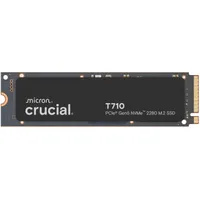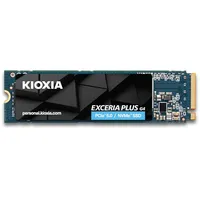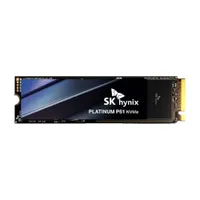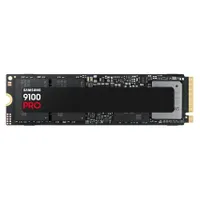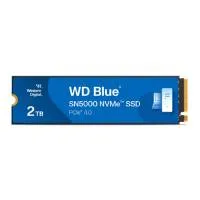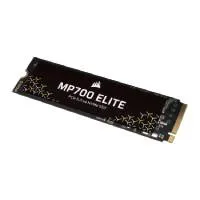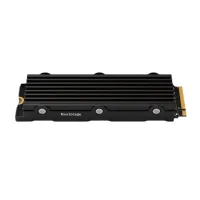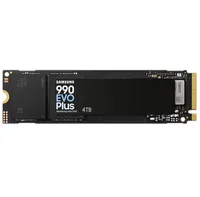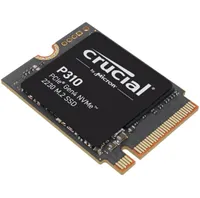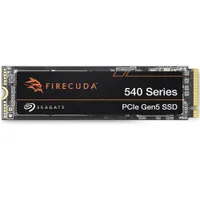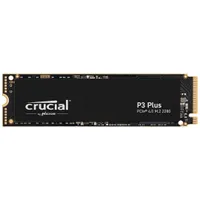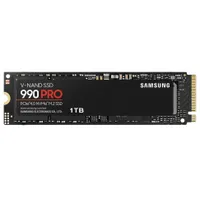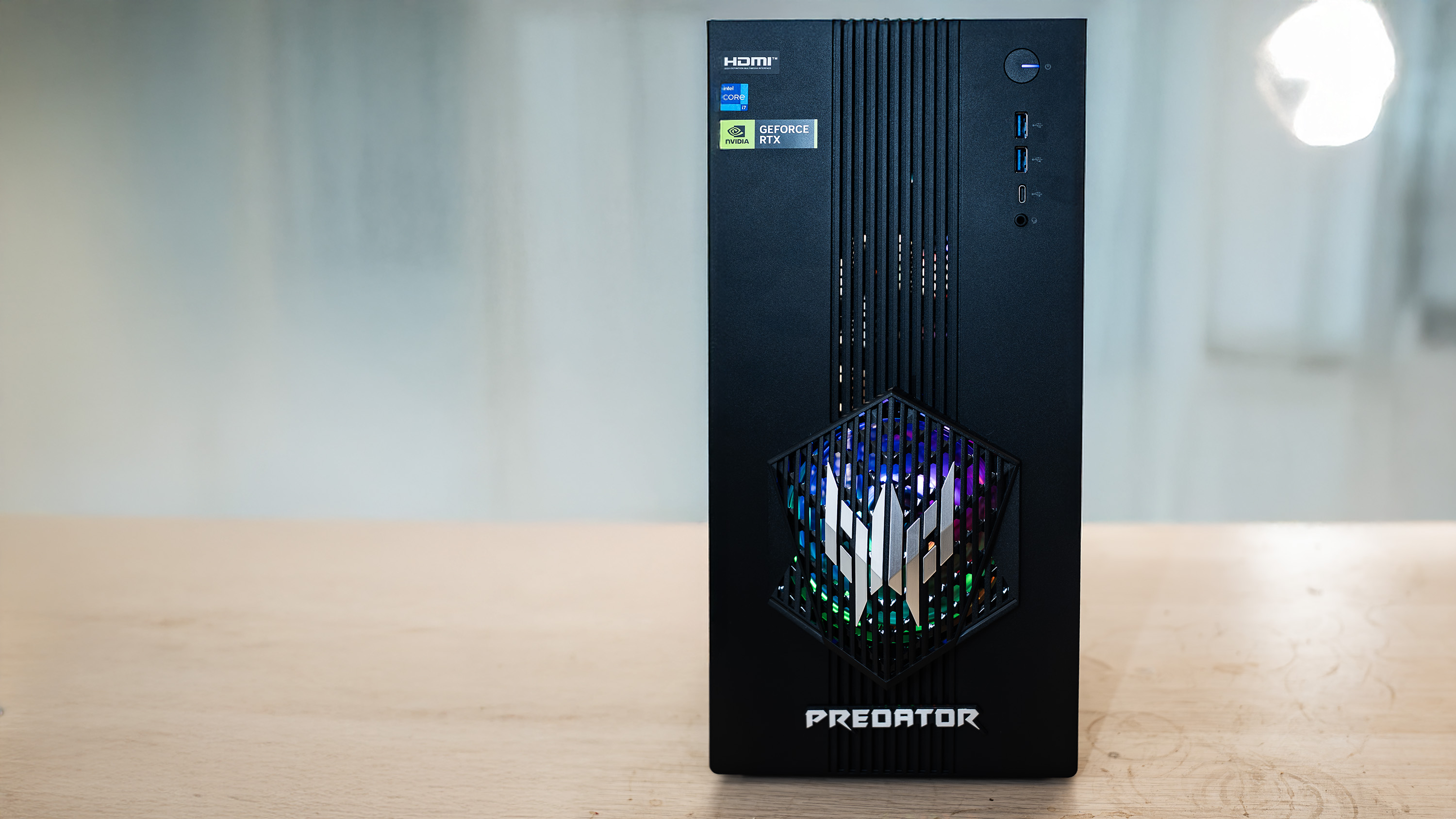Best SSD for gaming in 2025: the fastest and the best value solid state drives to perk up your PC
Give your gaming PC a serious speed boost with the best SSD for gaming.
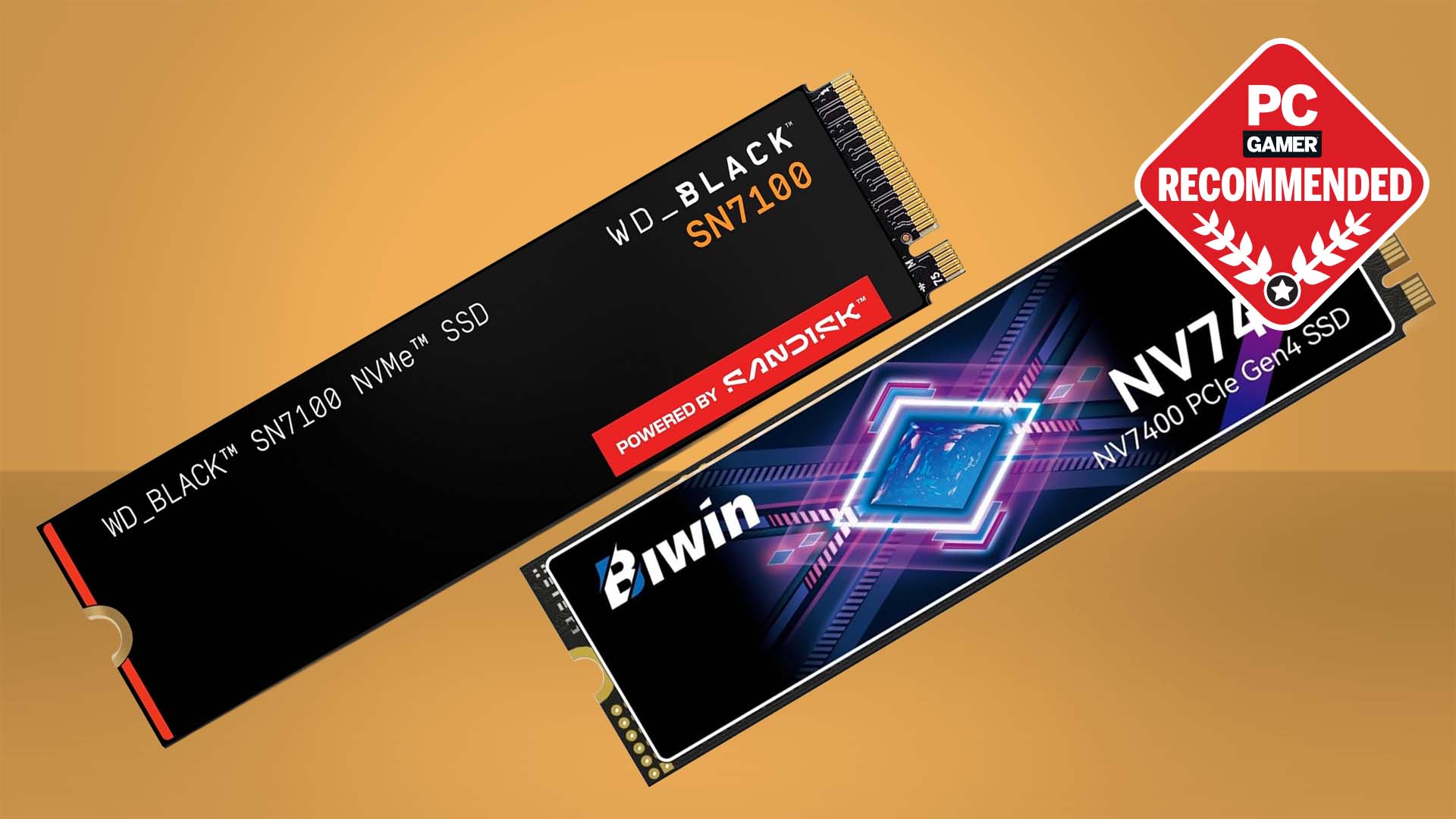
The best SSD for gaming might seem like somewhat oxymoronic phrasing given that you're not getting higher frame rates from having a faster drive in your gaming PC. But while the raw speed itself might not have a huge bearing upon the performance of a game, ensuring you have a good PCIe-based SSD will make your whole system feel far more slick in action.
Still, high-speed metrics are not the absolute for a great gaming SSD, if it were you would have a PCIe 5.0 drive topping this best SSD for gaming list. While they are dropping in price, and in the amount of heat they generate, a great PCIe 4.0 SSD will give you more Steam library space for your money, and still deliver a gaming experience on par with their more expensive cousins.
When we're picking the best SSD, we look at our performance benchmarks, but also at the makeup of the drive itself and the pricing levels of the drive at both 1 TB, 2 TB, and 4 TB levels. On those terms the WD Black SN7100 is the best SSD for gaming right now, with the Biwin Black Opal NV7400 as the best budget SSD; both great drives in their own right and deserving of a place in your rig.
We have individually and independently tested and reviewed 33 of the best SSDs in the past two years.
The quick list
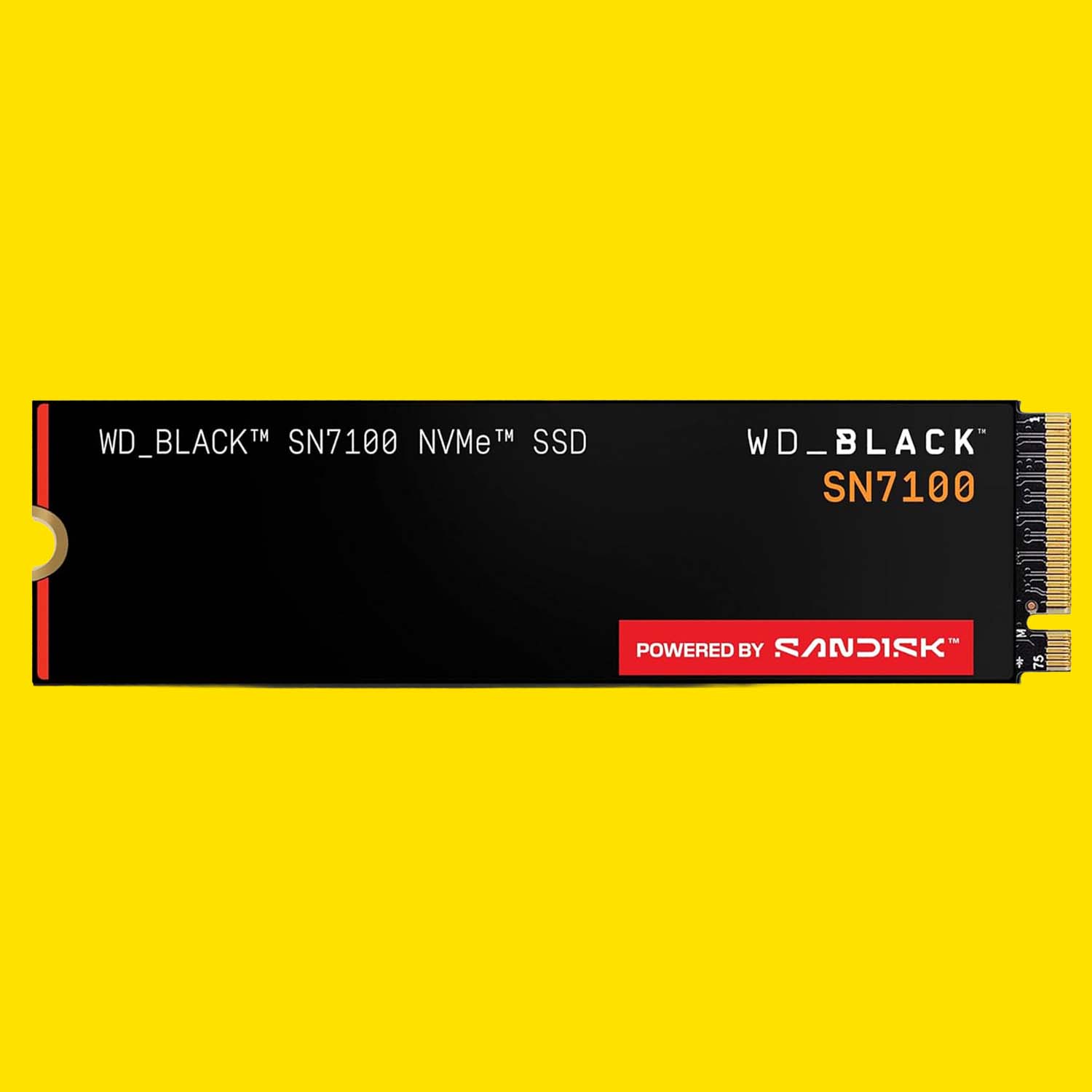
Best SSD overall
Sure, it's not a speedy PCIe 5.0 SSD, but raw pace does not the best SSD for gaming make. This is a pacey enough drive for pretty much any use case, but has the 4K random performance to make every Windows interaction beautifully slick.
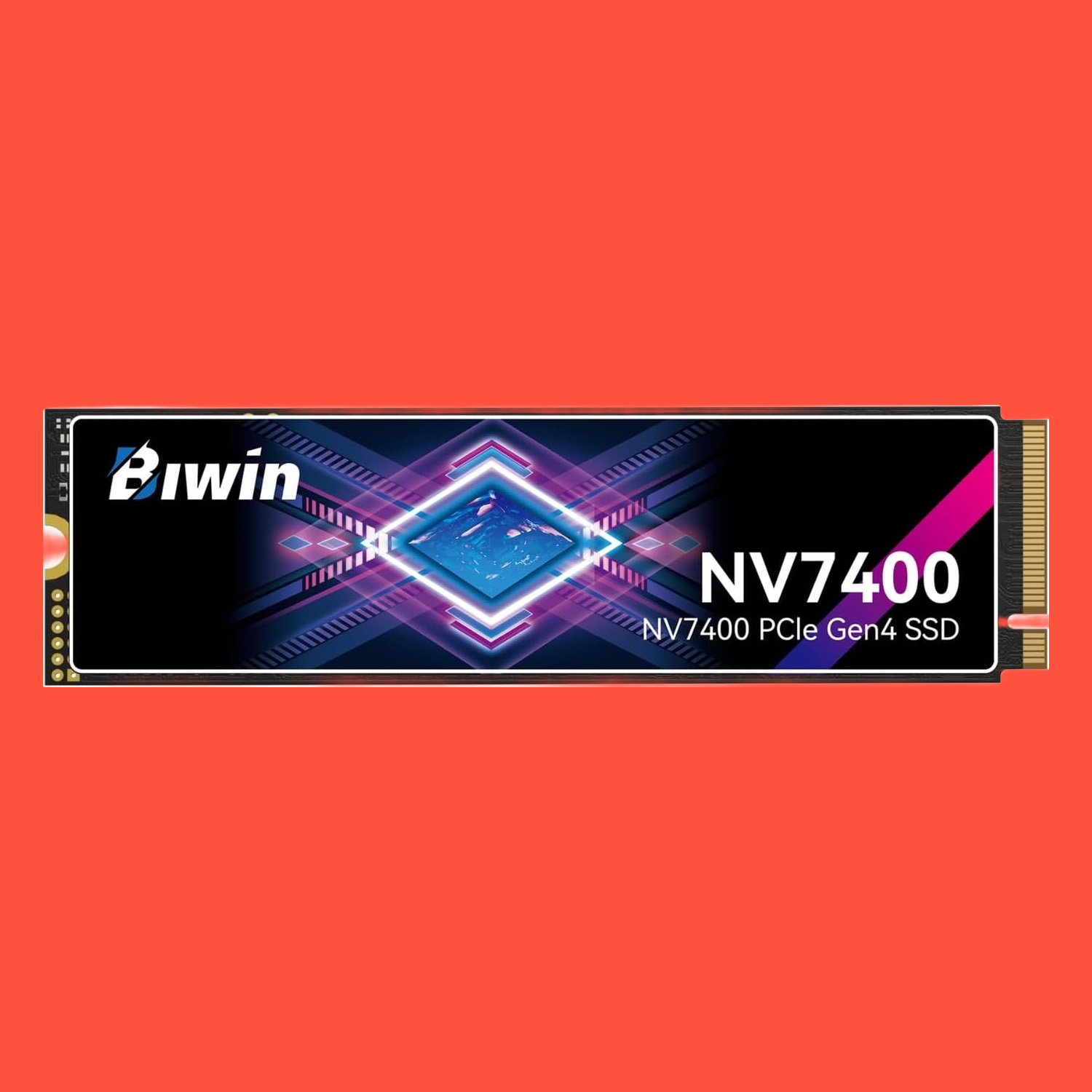
Best budget SSD
The best budget SSD is the Biwin Black Opal NV7400. Why? Its low price-per-GB, of course! It's also pretty quick compared to other budget Gen4 drives.

Best PCIe 5.0 SSD
This SSD is incredibly fast and surprisingly doesn't break the bank compared to some other PCIe 5.0 drives, although it's admittedly more expensive than a Gen 4 drive. Plus, in addition to being monstrously fast, it also keeps surprisingly cool.
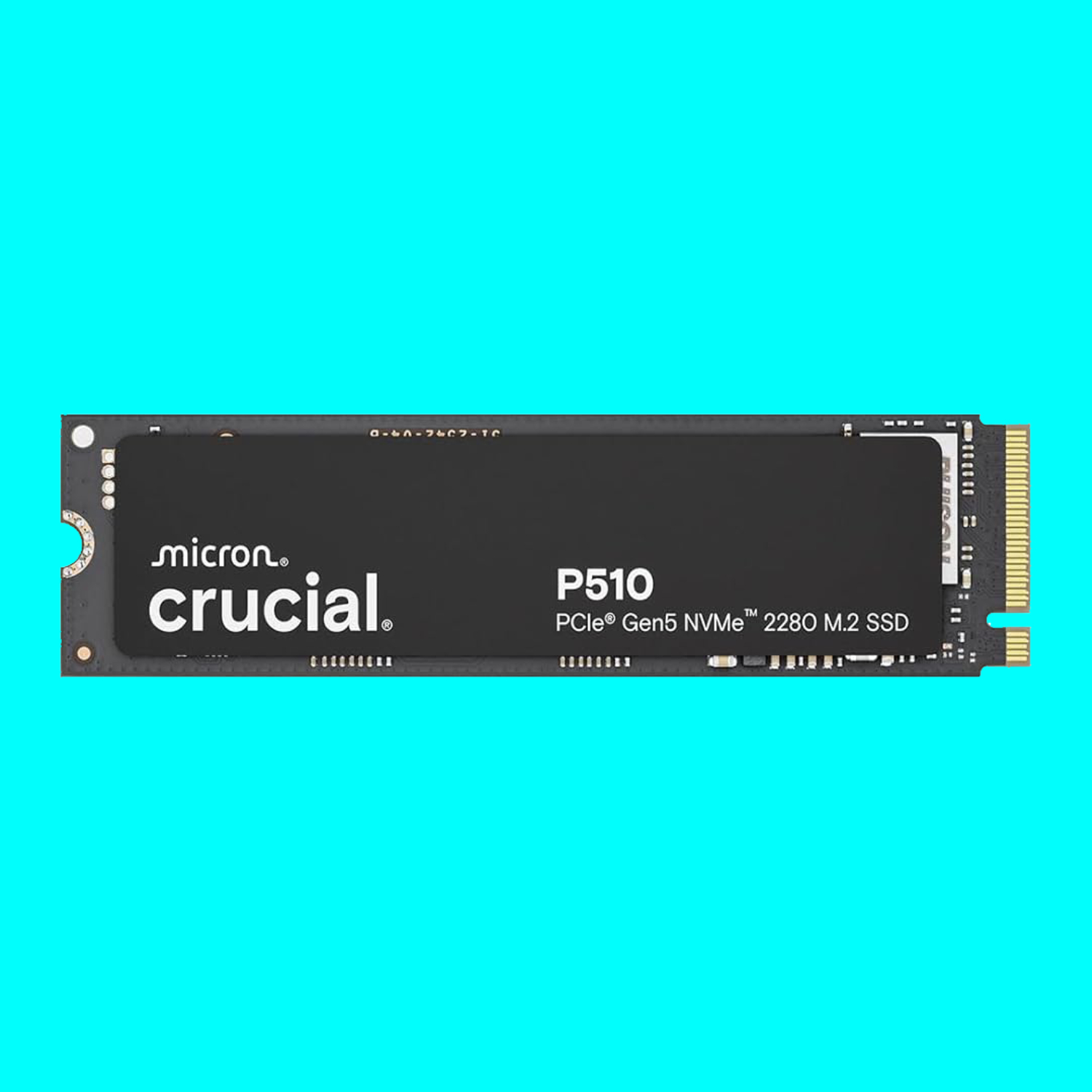
Best budget PCIe 5.0 SSD
While this Crucial drive might not be setting our Gen 5 NVMe benchmarks aflame, it also stays remarkably cool under pressure, and is available for very reasonable prices.
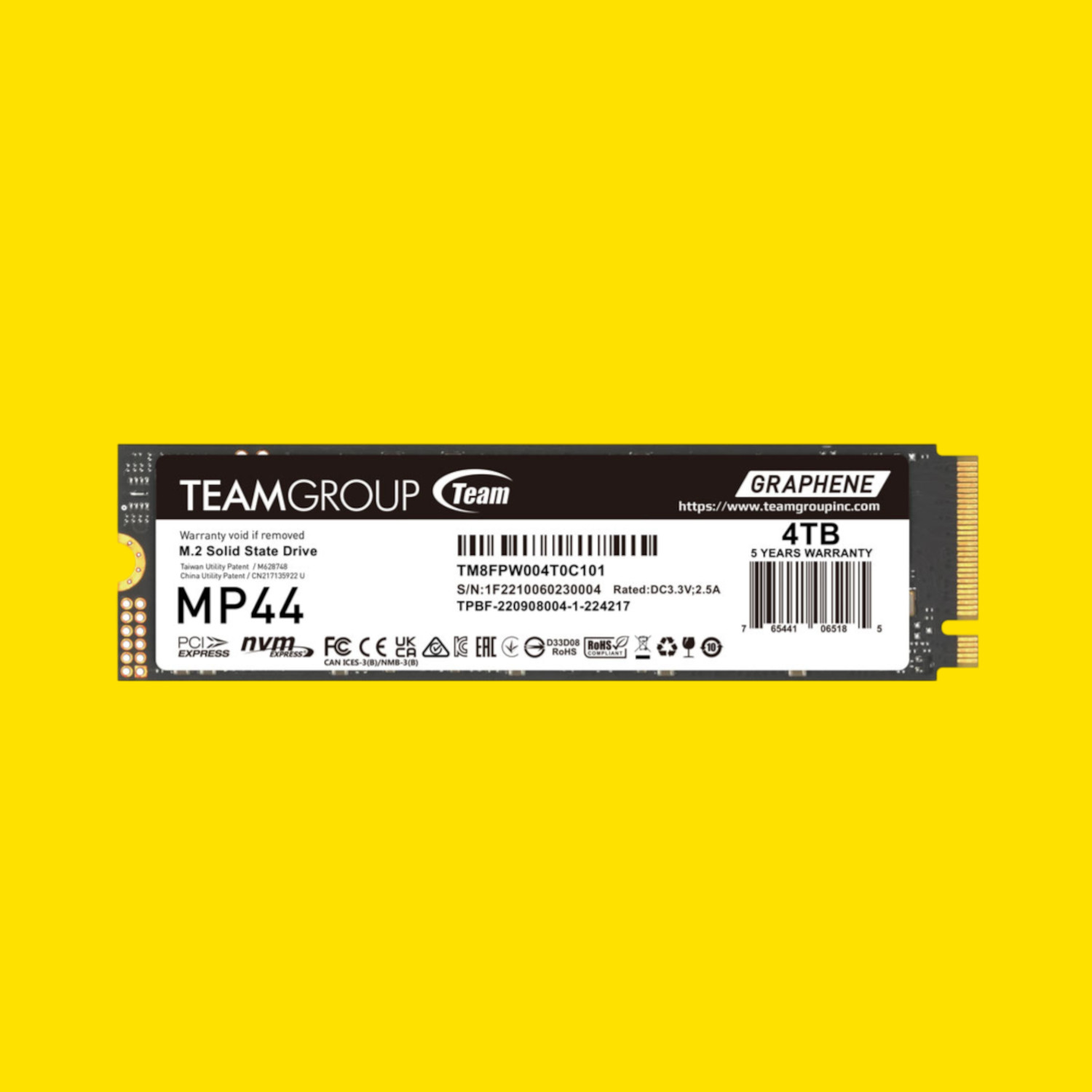
Best 4 TB SSD
If you want masses of high-speed NVMe storage for a not-so-massive price, then Team Group's MP44 is the obvious choice. It's very similar to the NM790 and there's nothing wrong with that.
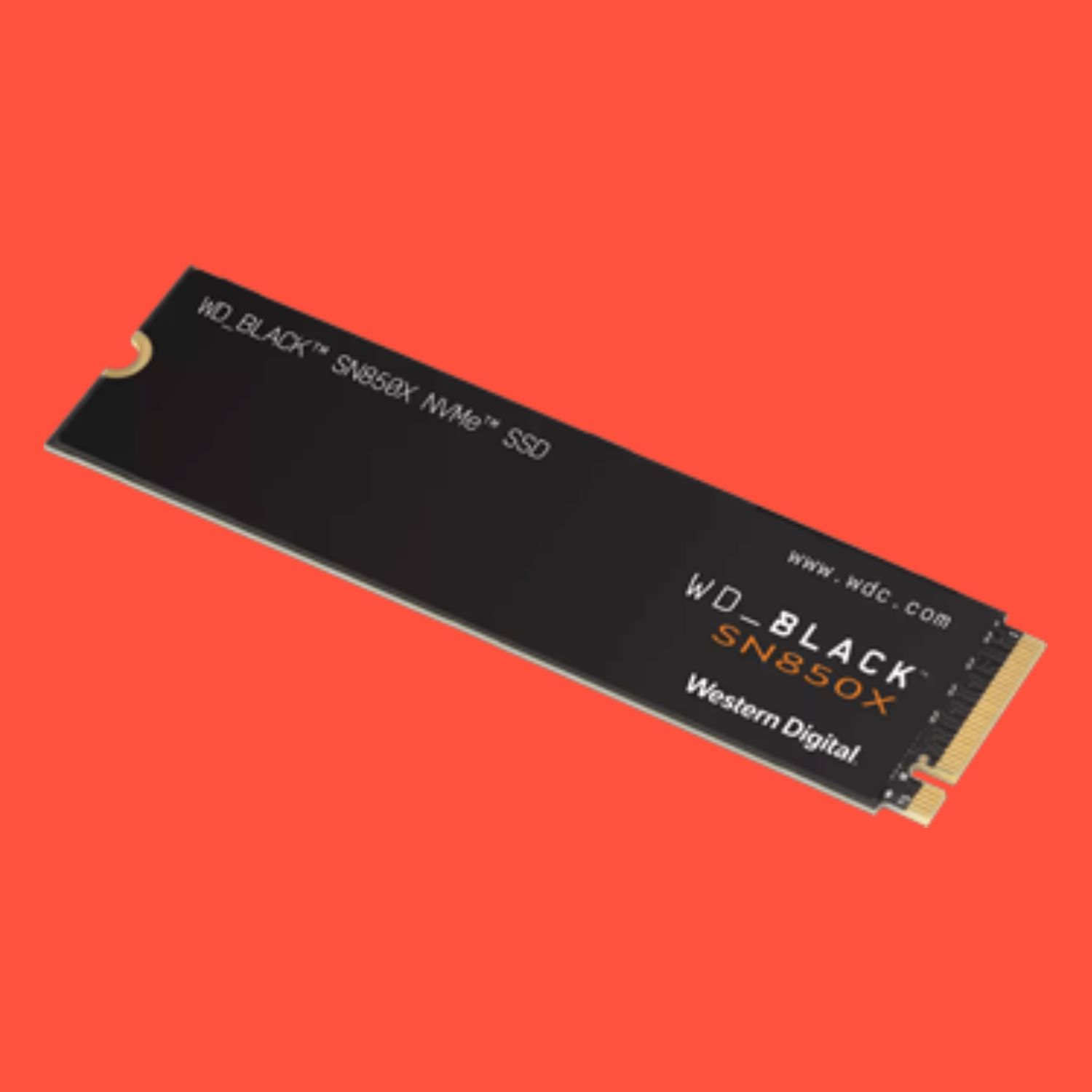
Best 8 TB SSD
One of the best SSDs for gaming has also been released in an 8 TB configuration, many moons after the smaller drives appeared. It's an ultra-sized (and ultra-priced) single drive, but it's more of a storage monster than a speed demon for gaming.
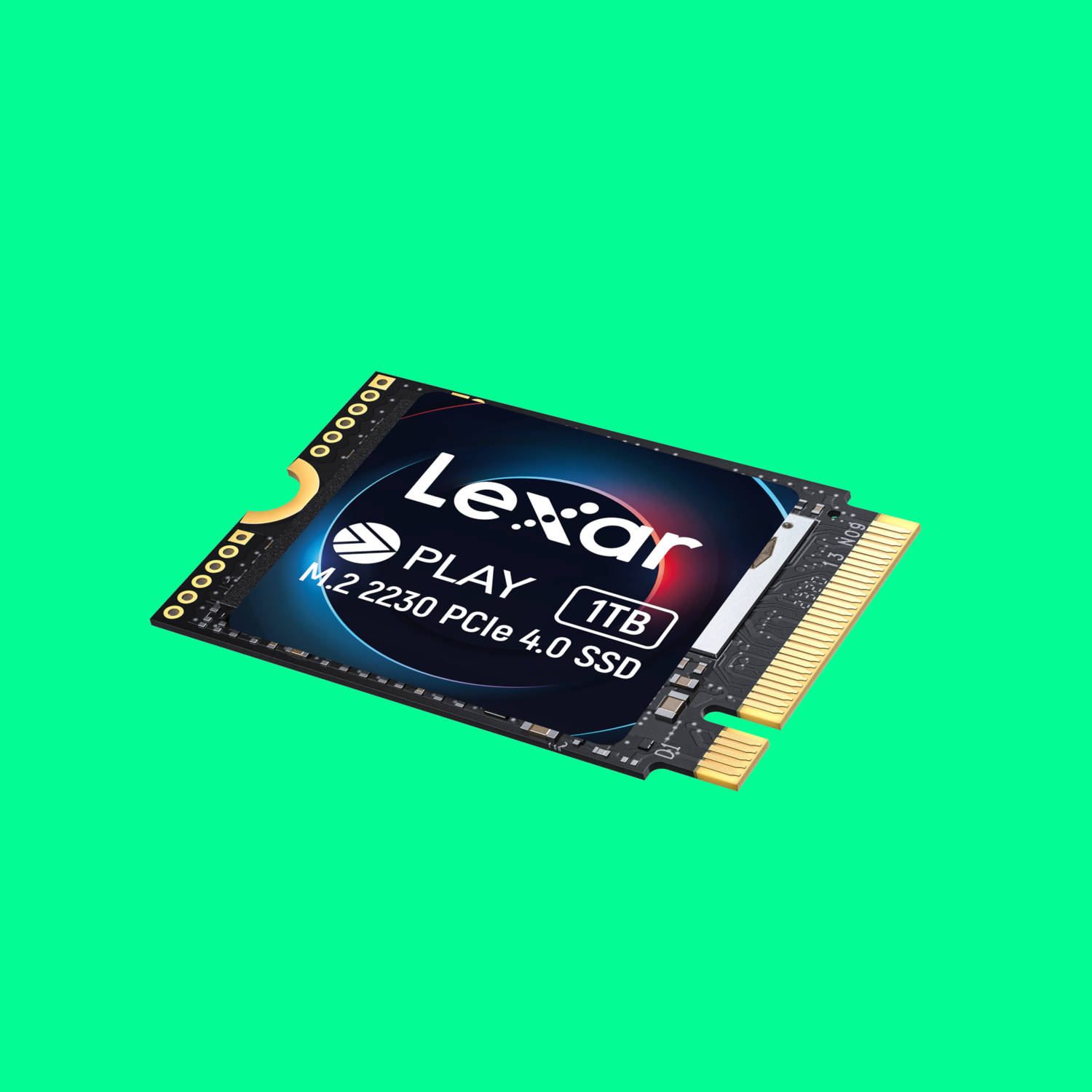
Best 2230 SSD
Need more storage in your Steam Deck, Asus ROG Ally, etc? Well, this 1 TB 2230 from Lexar is the one to get. Fast, cool, and great value for money. Shame there isn't a bigger version at the moment.
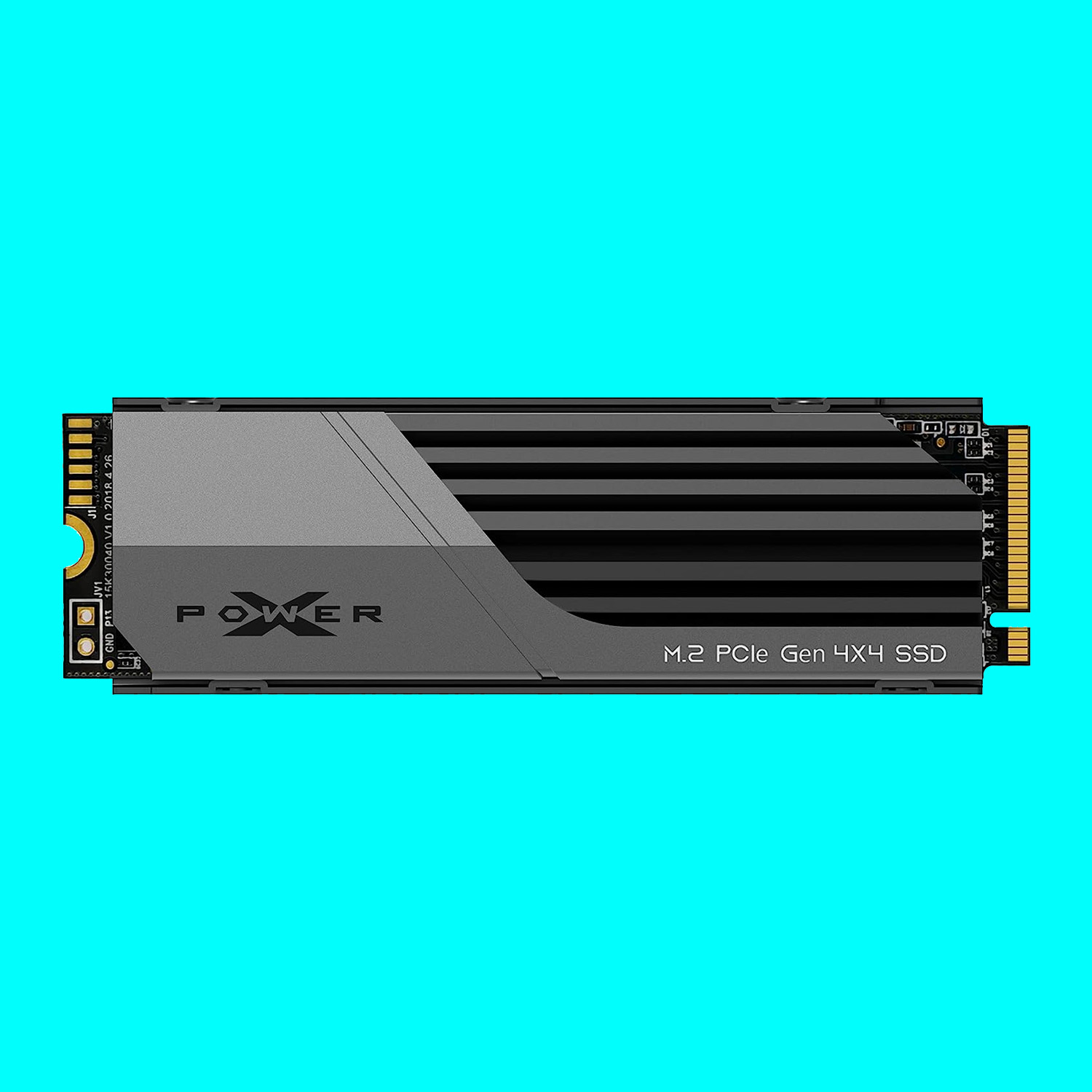
Best SSD for PS5
The latest Phison controller in combination with some high-performance NAND flash memory makes the Silicon Power XS70 an extremely fast drive for Sony's PlayStation 5.
The best SSD for gaming
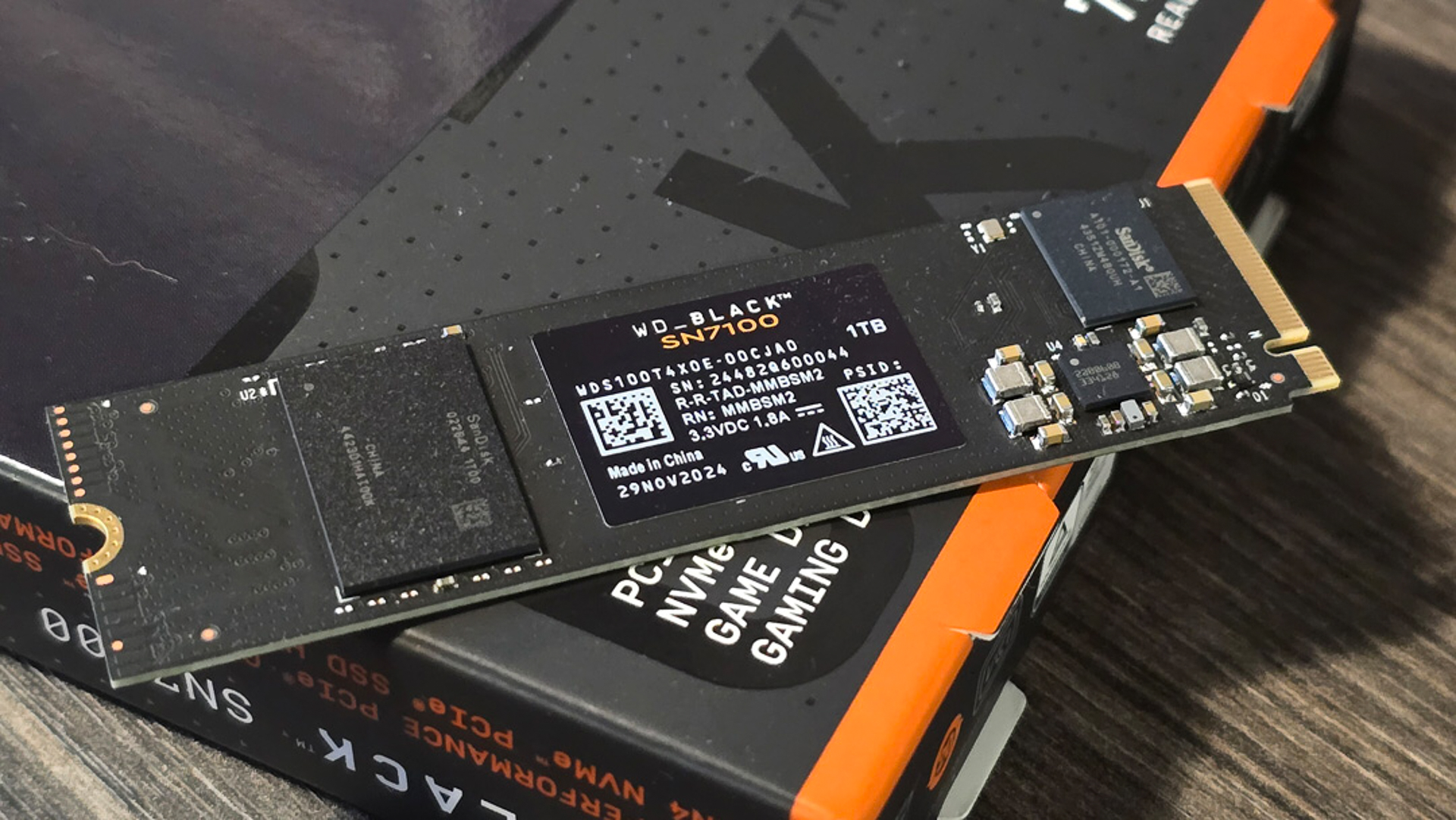

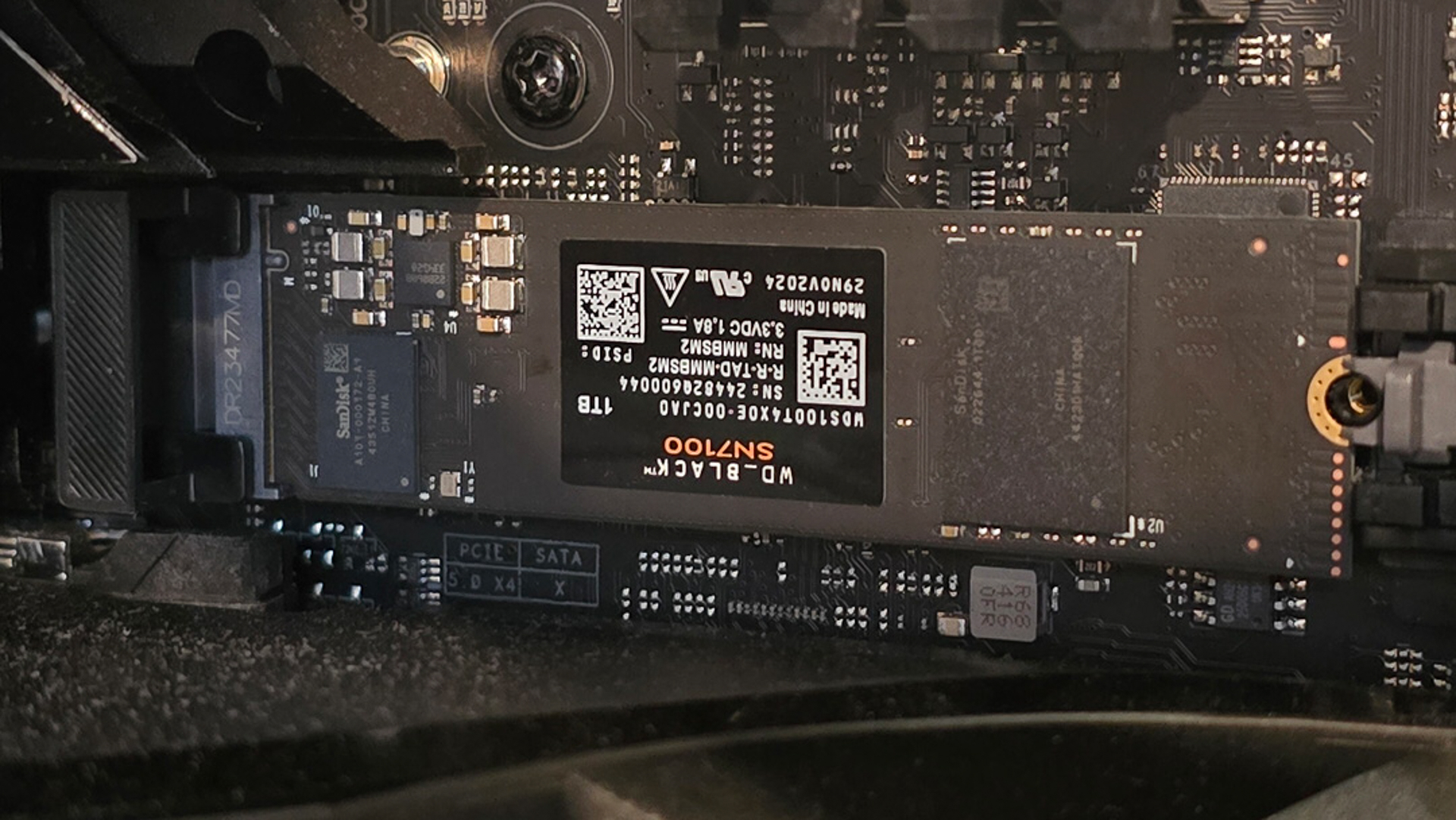

Specifications
Reasons to buy
Reasons to avoid
Zak says: "WD's latest Black SN7100 delivers some seriously impressive performance, particularly on the read front. It's cool, delivers where it needs to and is aggressively priced. Perfect for any gaming PC or console."
Read our full WD Black SN7100 SSD review.
The best SSD for gaming is the WD Black SN7100. This is the successor to the WD Black SN850X, which was our previous pick for the best SSD. It's not the fastest drive on the market—given it's a Gen 4 SSD not Gen 5—but it's about as fast as most people will need and comes in at an incredibly reasonable price.
The SN7100 offers the same level of performance as the SN850X, if not better, but has managed to save some costs by getting rid of the DRAM cache, having denser NAND, and making it all single-sided. And that NAND, by the way—Kioxia 218-layer BiCS8 TLC NAND—plus the SanDisk Polaris 3 A101 controller, makes for one speedy SSD.
While sequential read/write is great too (we clocked it at 7,116 MB/s), Random 4K performance blew us away. Our Zak, who tested the drive, says it "absolutely demolished every drive I've tested on the [Random 4K] read front, scoring an insane 101 MB/s." RND4k is what translates to gaming performance, and this drive performs well there, too.
Of course, if you want the fastest SSD around, you should pick up a speedy PCIe 5.0 one like the SN8100 below. But Gen 5 drives, even when priced competitively, are still far more expensive than Gen 4 ones like this one. And the real-world difference for most use cases—especially gaming—will be negligible. That's why we've stuck with a Gen 4 at the top of this list as the best SSD for gaming.
And when it comes to Gen 4, the SN7100 is easily top of the list, just like its predecessor, the SN850X. The latter will presumably be phased out before long, and the SN7100 is here to take its rightful place on the throne thanks to a balance of cost, speed, and efficiency. It's the best SSD on the market right now, all things considered.
| Header Cell - Column 0 | Price | Performance | Thermals |
|---|---|---|---|
⭐⭐⭐⭐⭐ | ⭐⭐⭐⭐ | ⭐⭐⭐⭐⭐ | |
⭐⭐⭐⭐ | ⭐⭐⭐ | ⭐⭐⭐ | |
⭐⭐⭐ | ⭐⭐⭐⭐ | ⭐⭐⭐⭐ |

The best budget gaming SSD
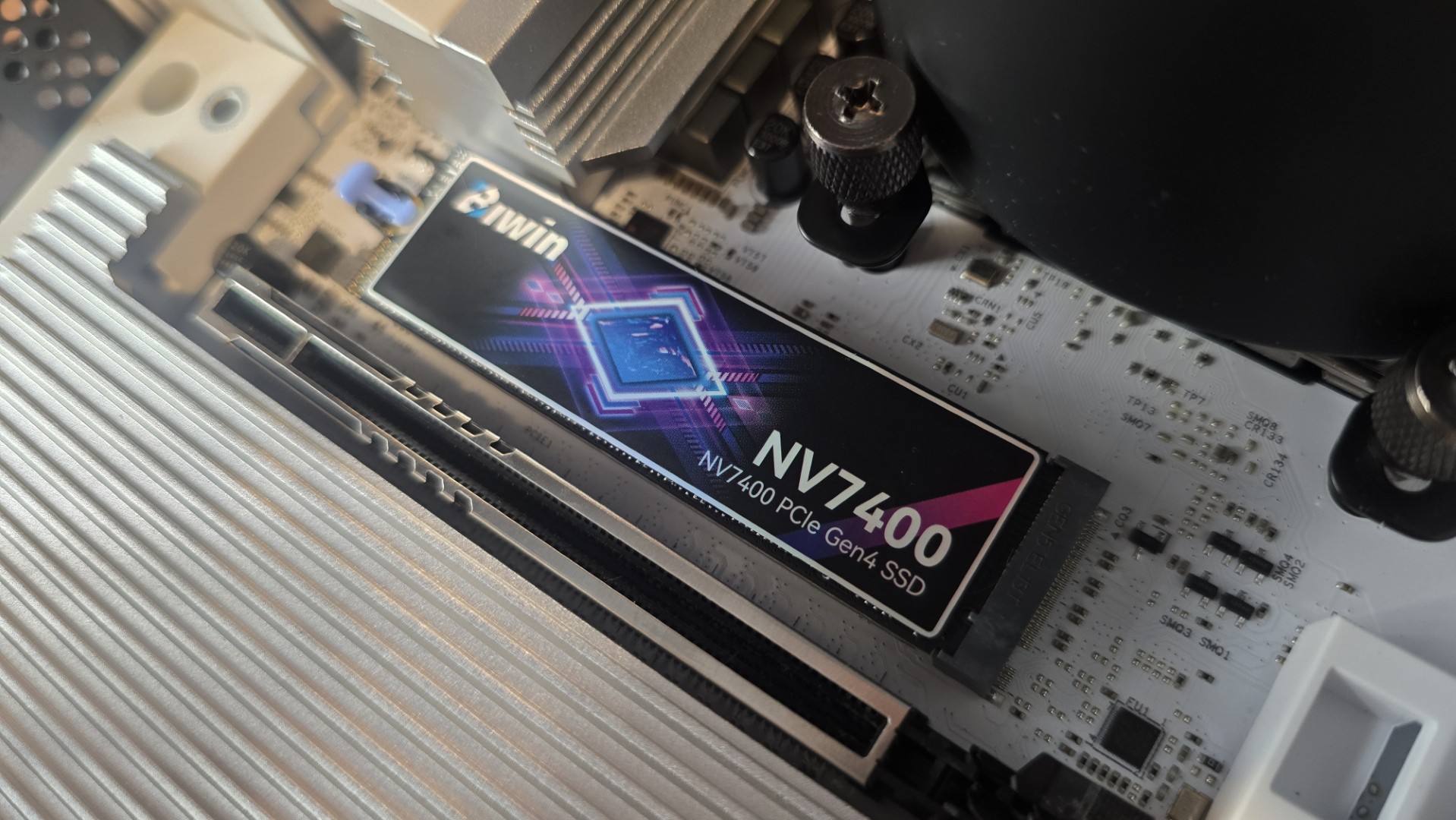
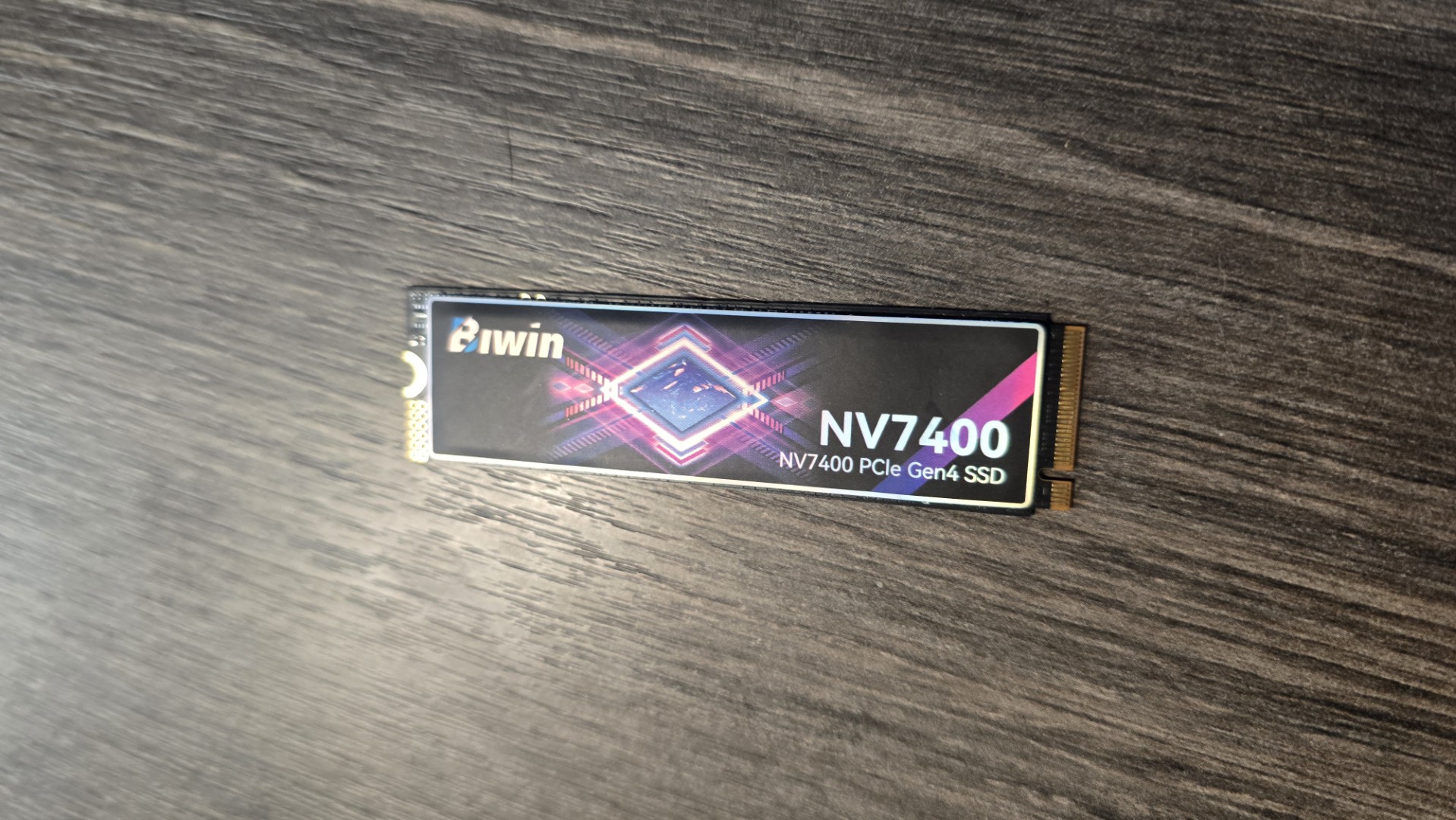
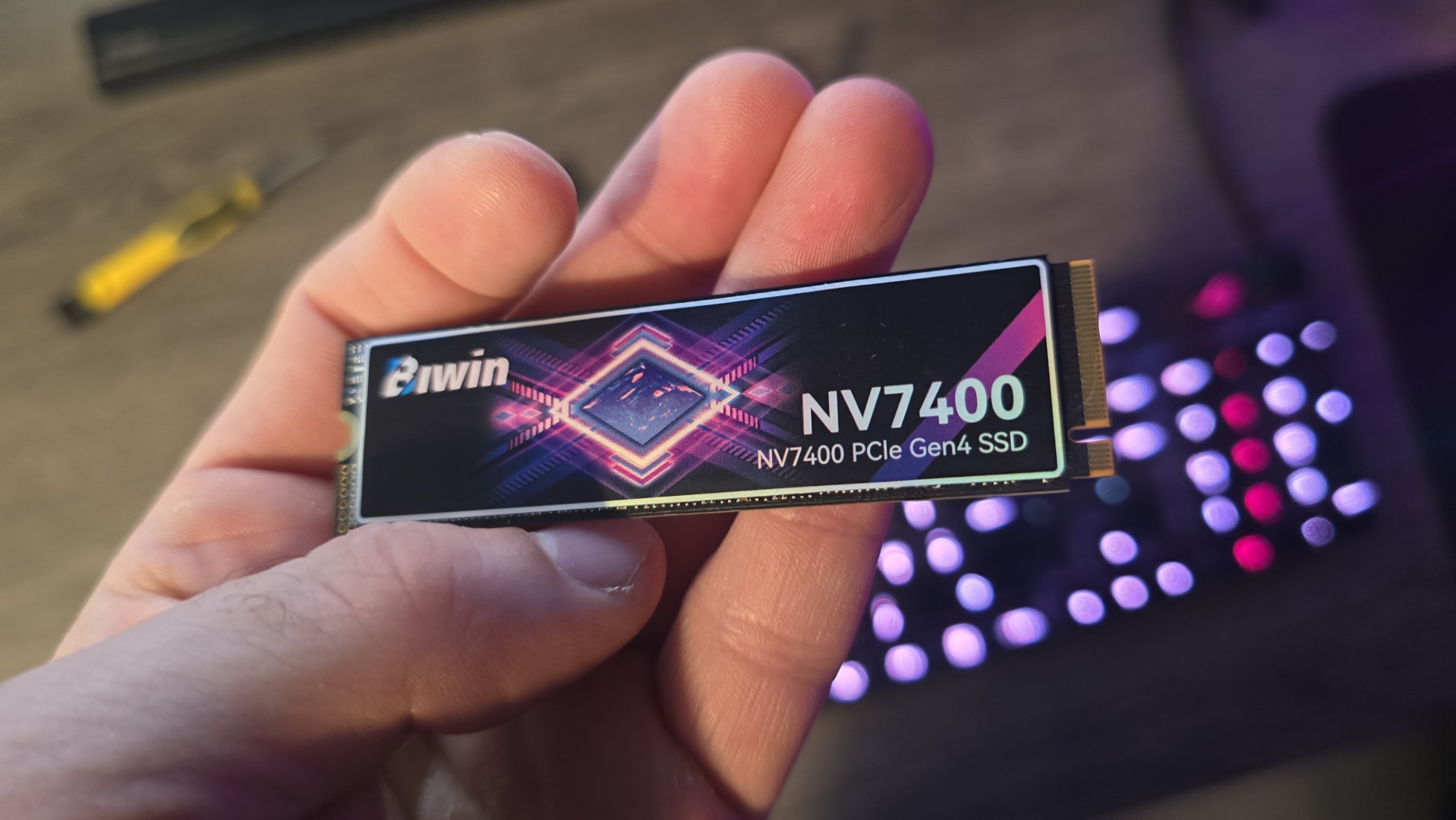
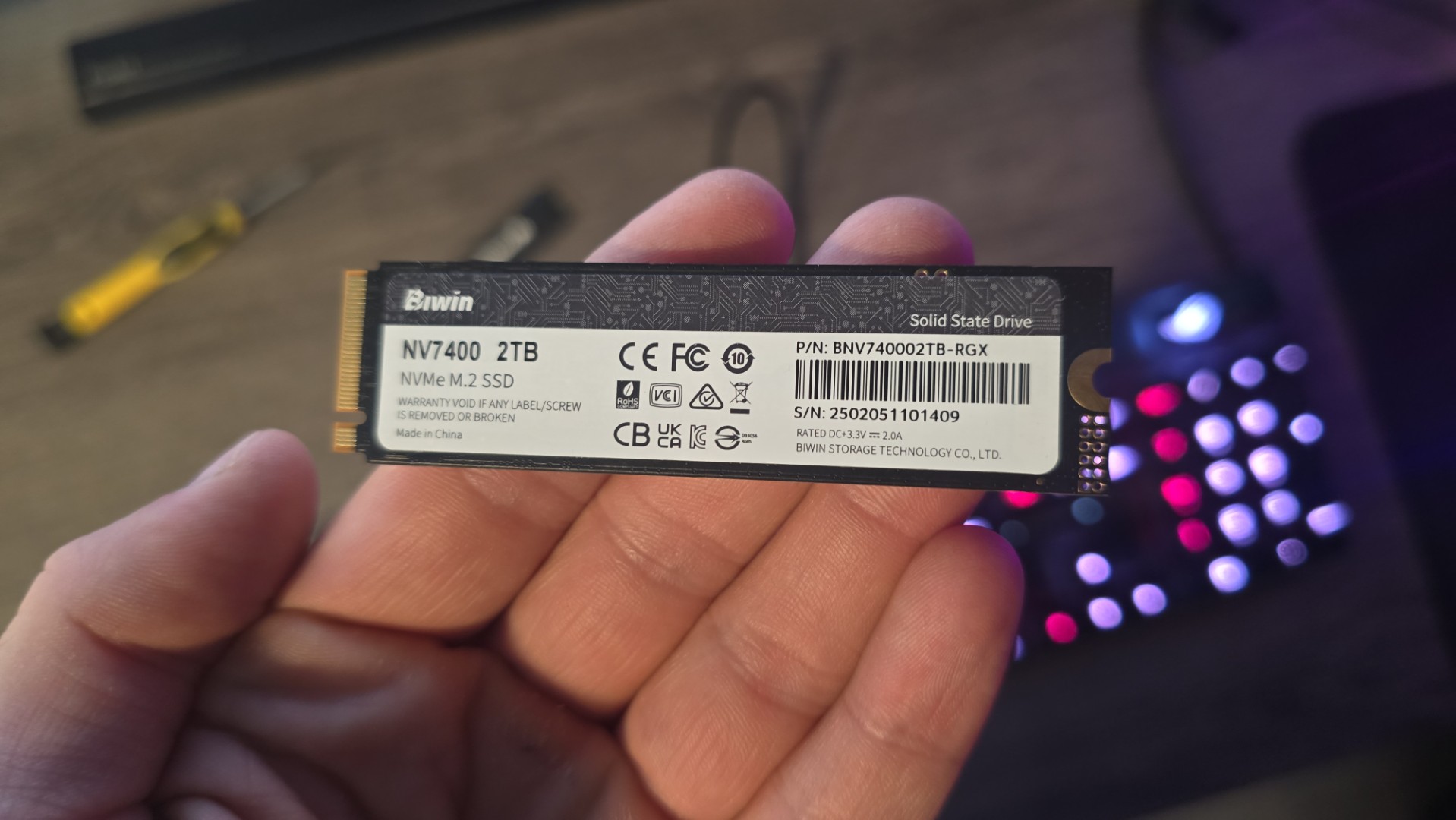
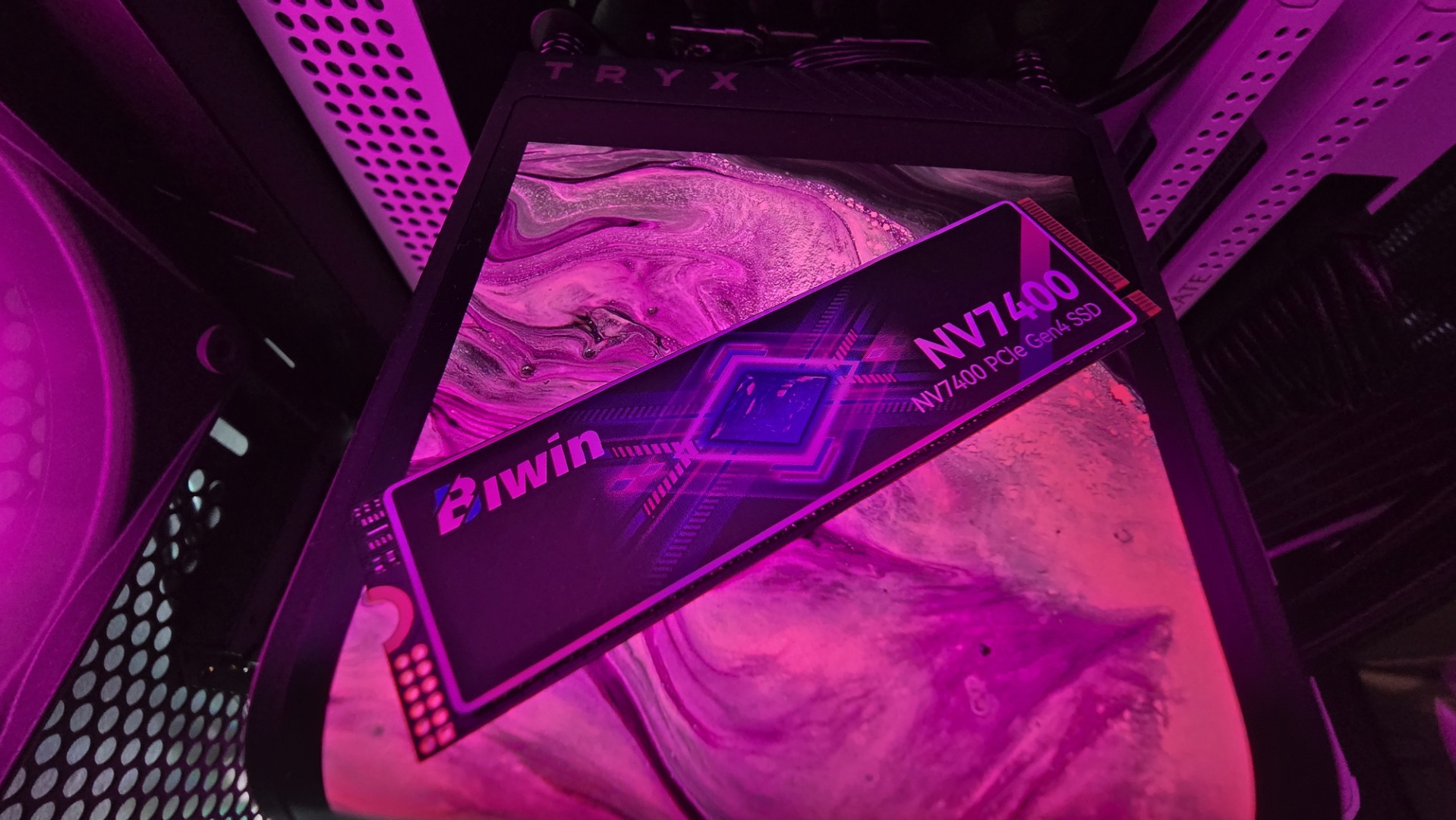
Specifications
Reasons to buy
Reasons to avoid
Zak says: "It's the best value drive on the planet right now. No equal. Not even close. The NV7400 delivers outstanding endurance, low temps, and a seriously impressive $ per GB rating. Yet, it's not perfect, with middling 4K results and variable NAND. Biwin had to pull some cunning side-steps to keep that price down."
Read our full Biwin Black Opal NV7400 review.
The best budget SSD is the Biwin Black Opal NV7400. With impressive speeds nearing the limit of what PCIe 4.0 can offer, it's no slouch. Moreover, it's priced in such a way to heap pressure on the competition. Even without any sort of discount, 2 TB of NV7400 will cost you just $120. That's just $0.06 per gigabyte.
When game install sizes are easily topping 100 GB without much of a second thought, the fact you can buy 2 TB of speedy storage for so little is a real gamechanger. It means we can safely hoard installs for a few live service games, heaps of indies, and whatever Twitch is playing that's all the rage right now without having to delete or redownload a thing.
The NV7400 is aptly named for its sequential read speed, which, wouldn't you know, lands at 7400 MB/s. That's right near the top of what's possible from a PCIe 4.0 x4 connection. You'd need to invest in a PCIe 5.0 drive to get substantially faster, but that requires spending a whole lot more.
Though the NV7400 is impressive in a straight line, it does suffer a touch at random operations. These are the type that games tend to rely on, and faster speeds here usually translates into quicker load times. The NV7400 isn't great in this regard, though it's not bad either. It's the writes that suffer the most, falling behind the WD_Black SN7100 by some margin.
But we'll forgive the NV7400 on account of how much of the stuff you're getting, and the fact that any reasonably quick NVMe SSD can load a game in a flash compared to an older SATA or HDD.
This is, ultimately, more of a capacity play. How much of NAND flash can you stuff on an NVMe drive and keep costs down? The answer, according to Biwin, is quite a lot. Just note that sometimes it's Micron's NAND, other times it's YMTC's NAND. We tested the former.

The best PCIe 5 SSD

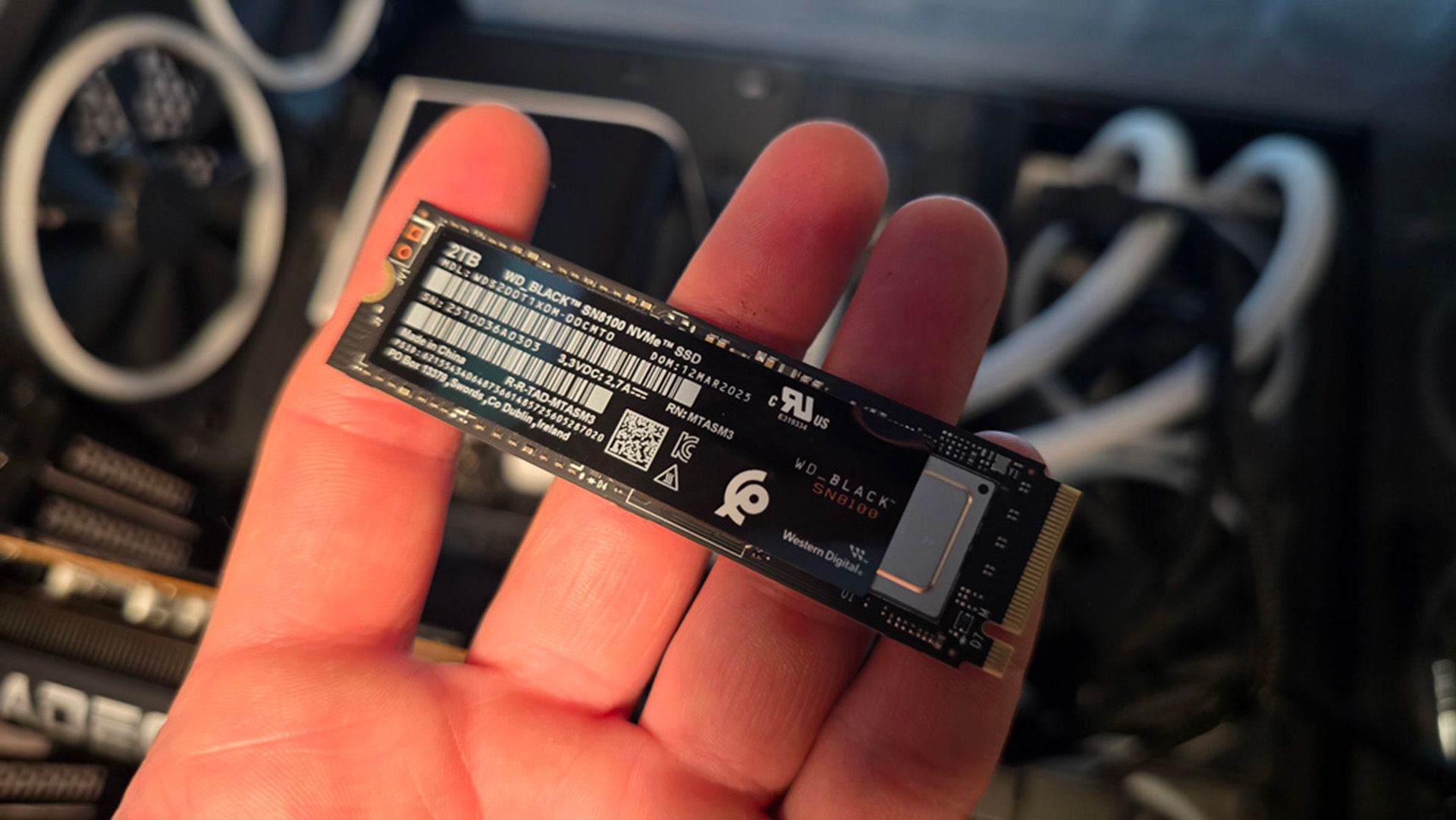
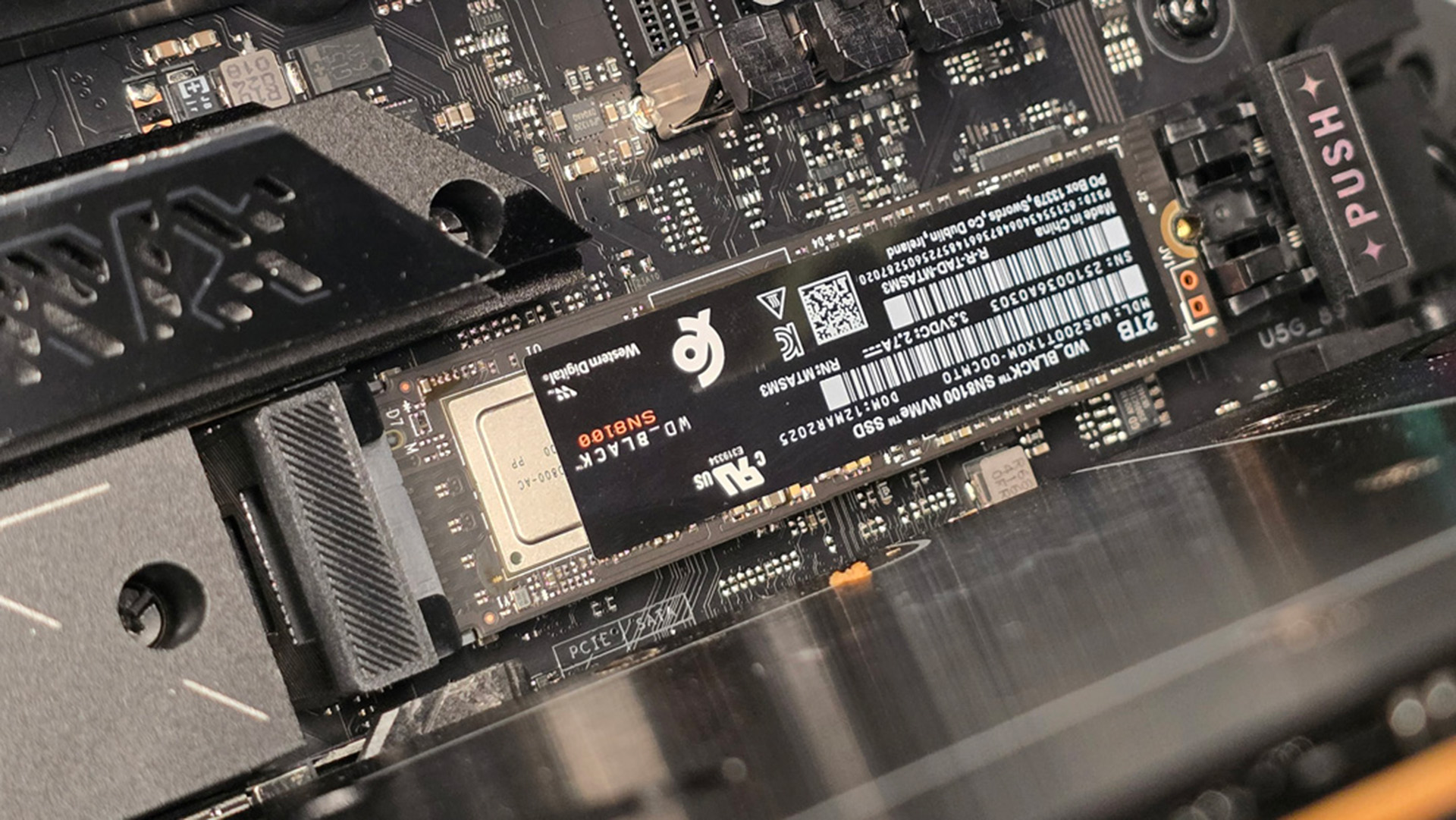
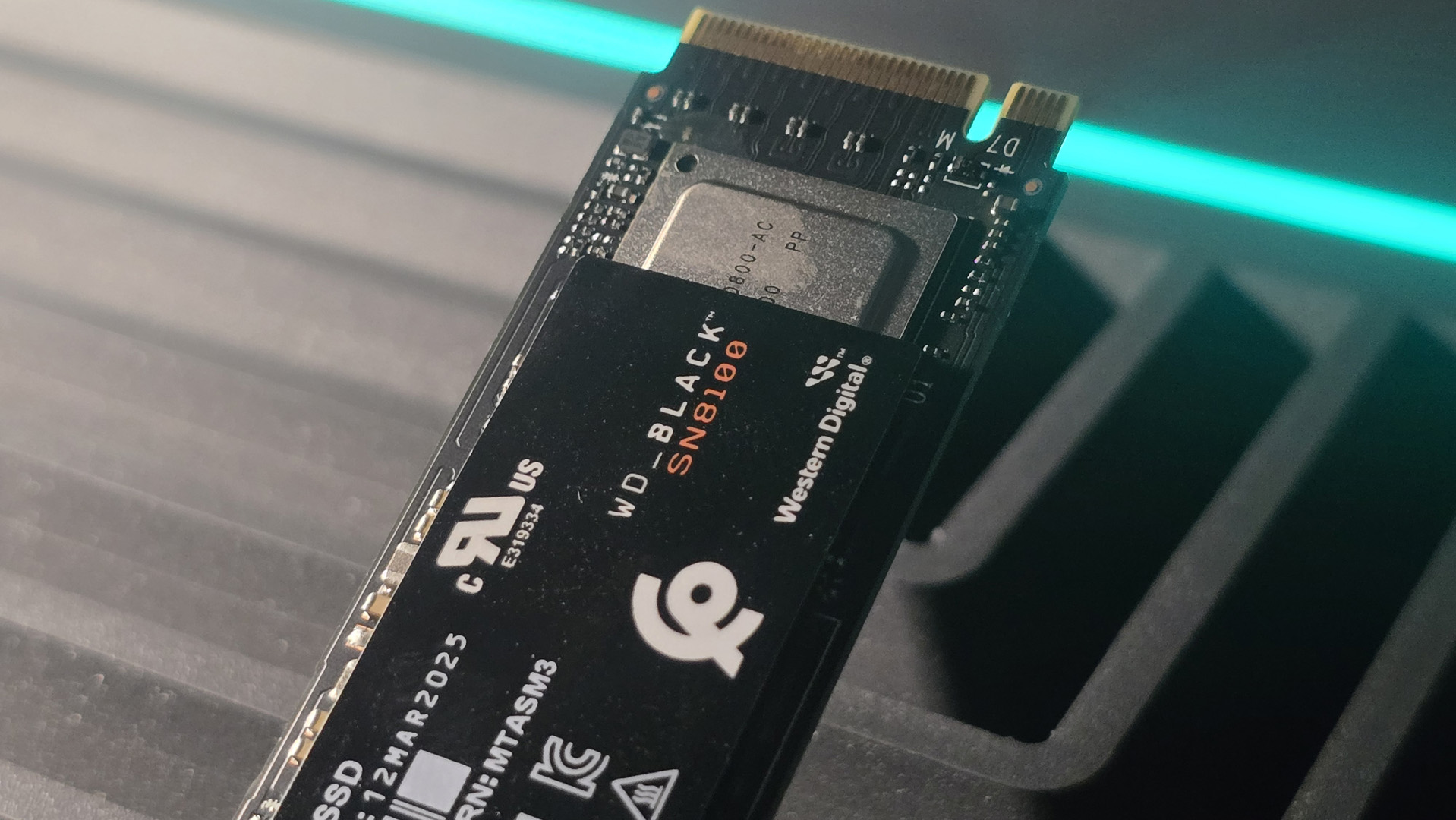
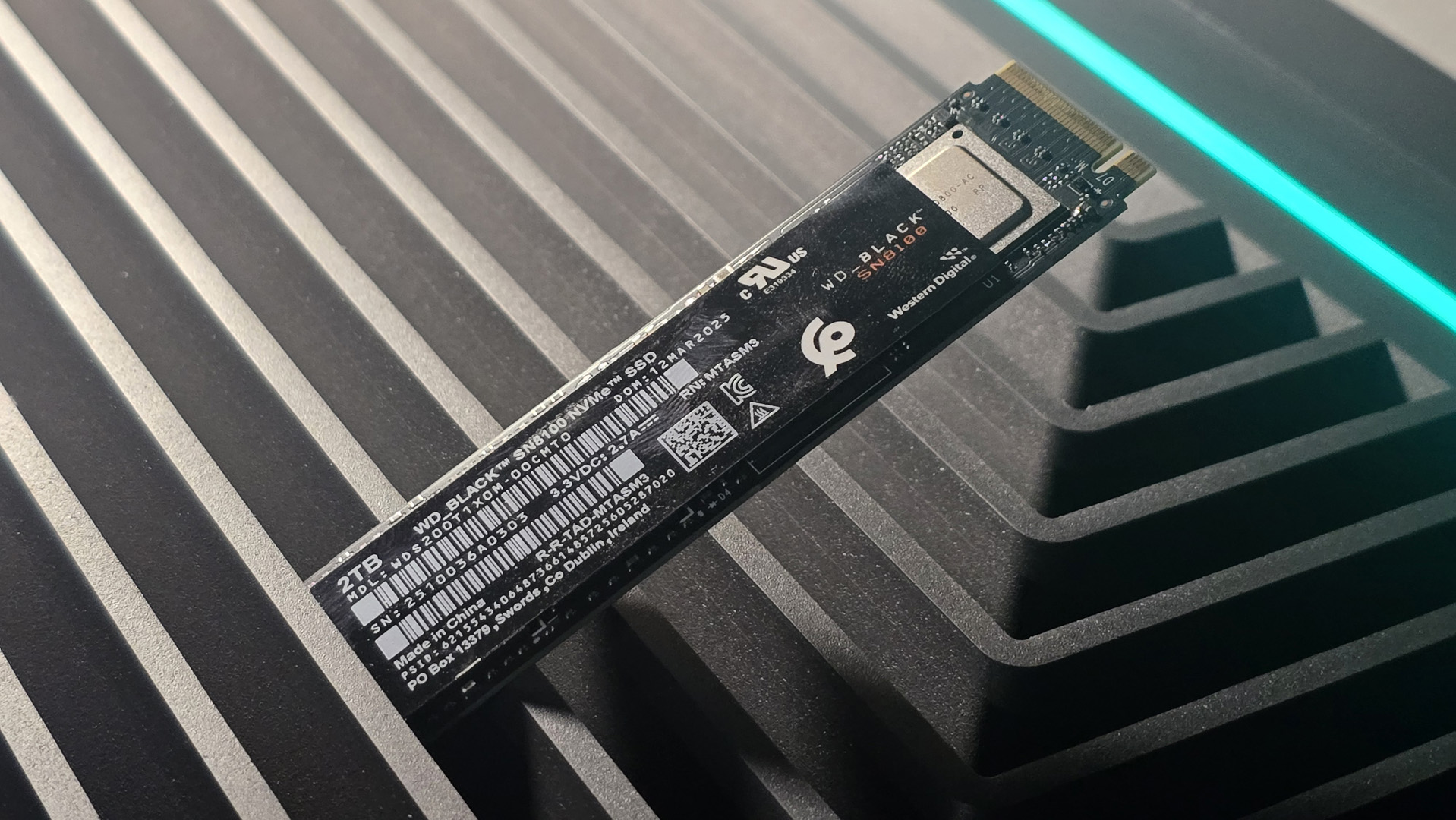
Specifications
Reasons to buy
Reasons to avoid
Zak says: "This is the fastest PCIe 5.0 SSD on the market to date. It doesn't matter if you're a pro gamer or a working professional; the SN8100 delivers in every arena and then some. For its first PCIe 5.0 SSD WD has set the bar incredibly high. Now everyone else has to catch up."
Read our full WD Black SN8100 review.
The best PCIe 5 SSD is the WD Black SN8100. With the SN8100, it seems we're now at a point where we can genuinely start seriously recommending Gen 5. PCIe 5.0 SSDs had previously tended to be too expensive and too hot to recommend over a PCIe 4.0 one, but the SN8100 shows such an improvement in performance and heat, and is reasonably priced enough, that it's definitely worth consideration.
SanDisk is now officially post-Western Digital, so despite the naming, this is a SanDisk drive through and through. And marking the occasion, the company is using an entirely new proprietary controller, the 8-channel SMI2508. That's combined with some 218-layer BiCS8 TLC 3D CBA NAND, and at launch, the drive comes in 1 TB or 2 TB configurations with or without a heatsink.
To state the case simply: This is the fastest drive we have tested, by far. At 14,710 MB/s sequential read and 119 MB/s RND4k read speeds, it leaves every single other Gen 5 we've tested in its wake. That Random 4K performance in particular is impressive, and it translates over to gaming performance, as we found the SN8100 to have much quicker load times than the other drives we tested in the FFXIV: Shadowbringers benchmark.
Normally, all this would mean an incredibly hot drive, but actually it stays relatively cool, peaking at about 74 degrees over our entire benchmarking run. Similarly, we might expect it to be ridiculously expensive, but it's very competitively priced compared to other PCIe 5.0 drives. You're still paying more than a Gen 4, of course, but it's hardly extortionate at about $0.14 per GB for the 2 TB version.
For sure, a Gen 4 drive will be all many gamers will want or need. But for those of you who want the fastest drive around, the SN8100 is most definitely where it's at. Our Zak called it "just monstrous" in his review, and that about sums it up. It's the best PCIe 5 SSD on the market right now.

The best budget PCIe 5.0 SSD for gaming

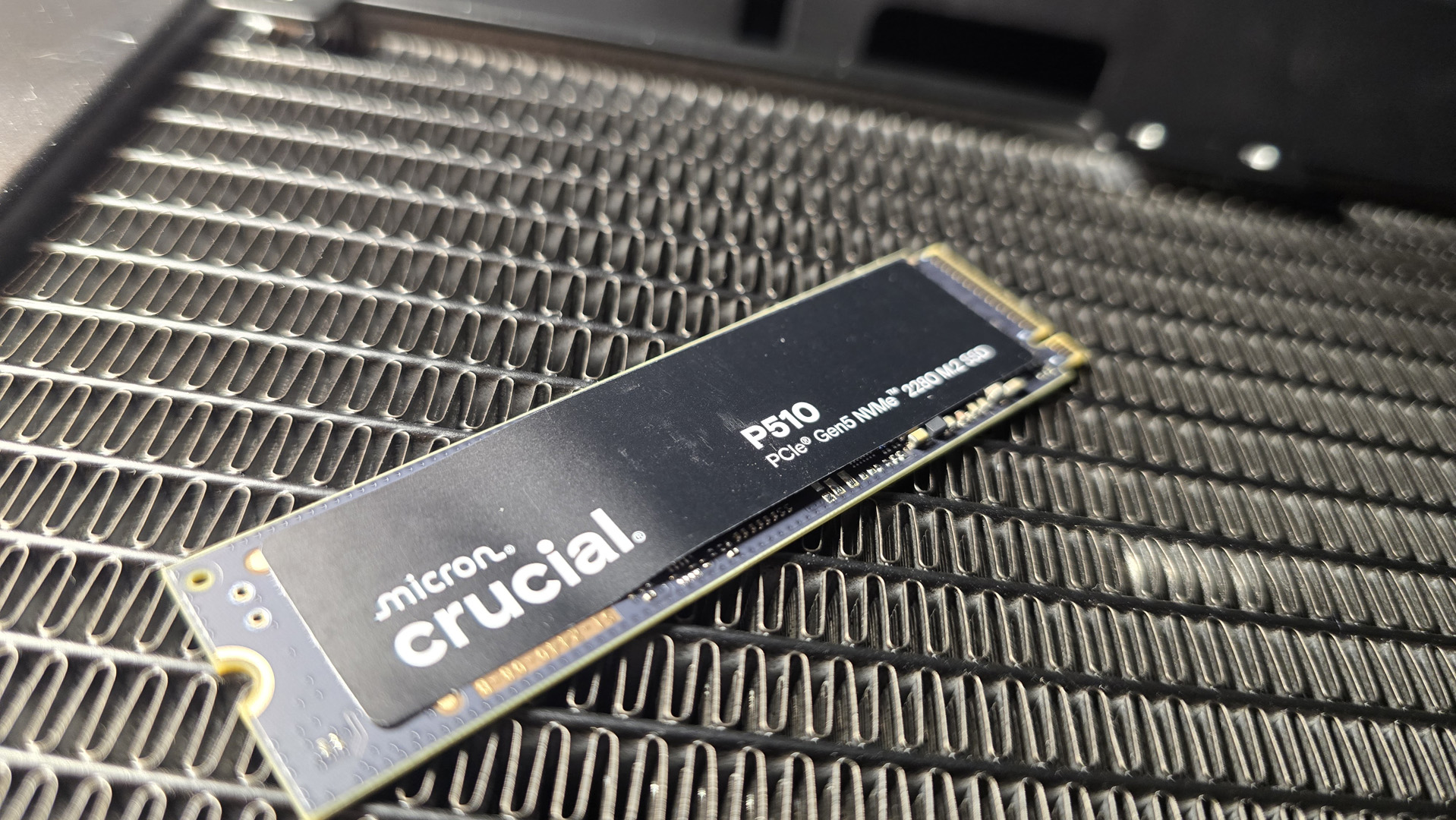



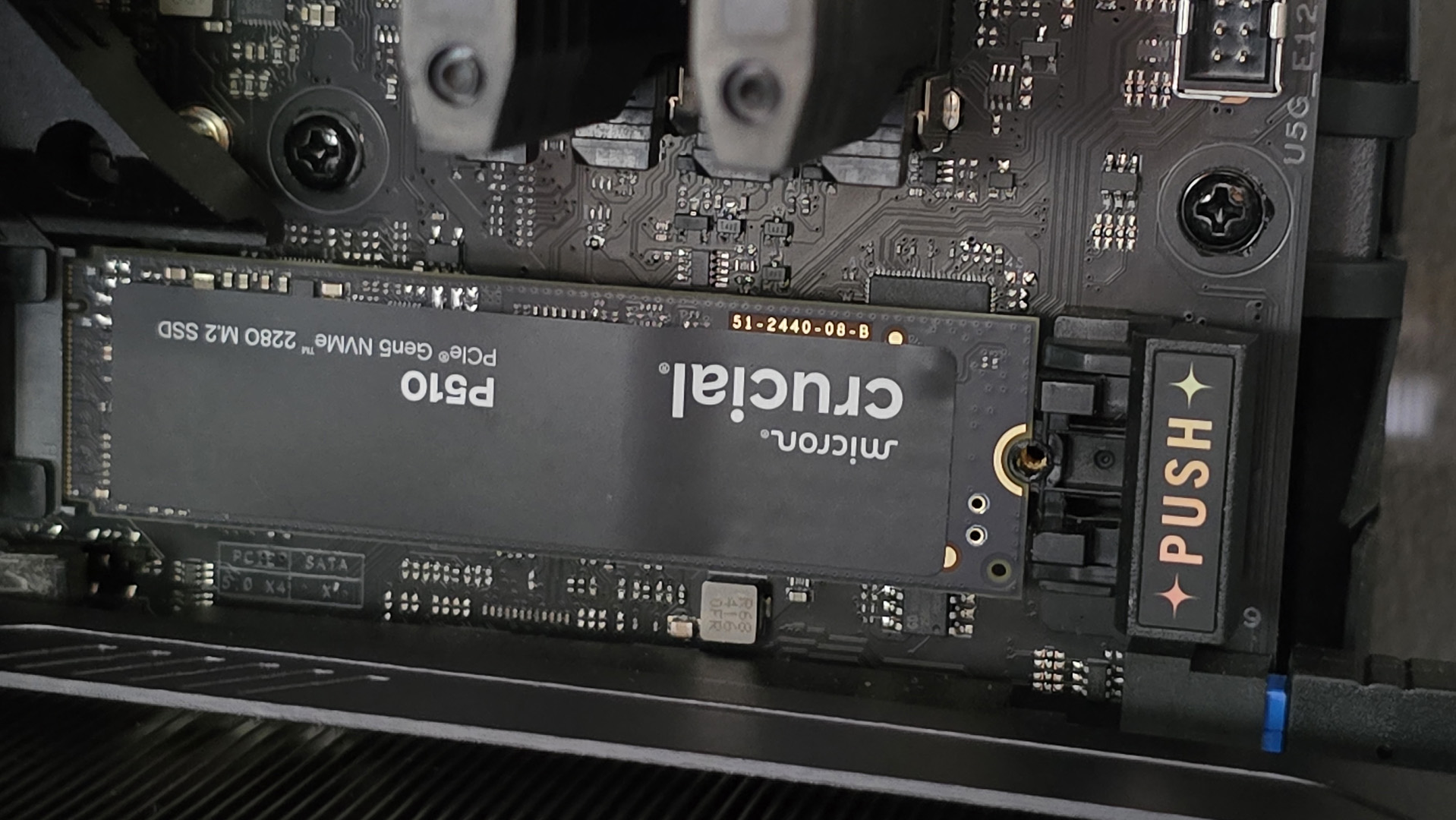
Specifications
Reasons to buy
Reasons to avoid
Zak says: "With its own 276-layer NAND and Phison's latest controller, this budget drive absolutely dominates those price-to-performance ratios and then some. If you're looking for a cheap, affordable, versatile SSD for your next system, the P510 is a fine pick and well worth considering."
Read our full Crucial P510 review.
The Crucial P510 is that rarest of things—a Gen 5 NVMe drive we can stand behind thanks to the performance you receive in relation to the cost. That makes it the best budget PCIe 5.0 drive right now, a category that was previously sorely lacking in contenders.
Sitting at the heart of this drive is Phison's E31T cacheless controller, built on TSMC's 7nm node. Compared to the E26 variant of old the new Phison controller is significantly more efficient, which, in combination with a quad-channel architecture, means the temperature problems that plagued early Gen 5 drives are reigned in here.
The Micron 276-layer TLC NAND is pretty nippy, too. We clocked the sequential reads at 10,973 MB/s and the writes at 9,394 MB/s, pretty darn close to what Crucial advertises on the box. It's not going to be bothering the immensely speedy WD Black SN8100 above, but given that the 1 TB model we tested is available for a mere $100, it's a very impressive result nonetheless.
It's not all gravy, however, as the random 4K results are a little on the ordinary side. And compared to some of the other Gen 5 drives on our leaderboard the Crucial falls behind in the game loading benchmarks, or rather, delivers relatively sluggish load times compared to ithe more expensive Gen 5 competition.
Still, that's not quite the point here. This drive delivers proper Gen 5 performance in many respects, for the same sort of cost as many Gen 4 SSDs on the market. And crucially (sorry, I had to at some point), it keeps the temperatures well within reasonable margins, topping out at 64°C under heavy testing.
So, dense and fast NAND in combination with a much more efficient controller really has resulted in a budget PCIe 5 drive to be proud of. It might not be bothering its much more expensive competition in the benchmarks, but if you want to jump on the Gen 5 train for very reasonable cash, here's where you want to be.

The best 4 TB SSD for gaming
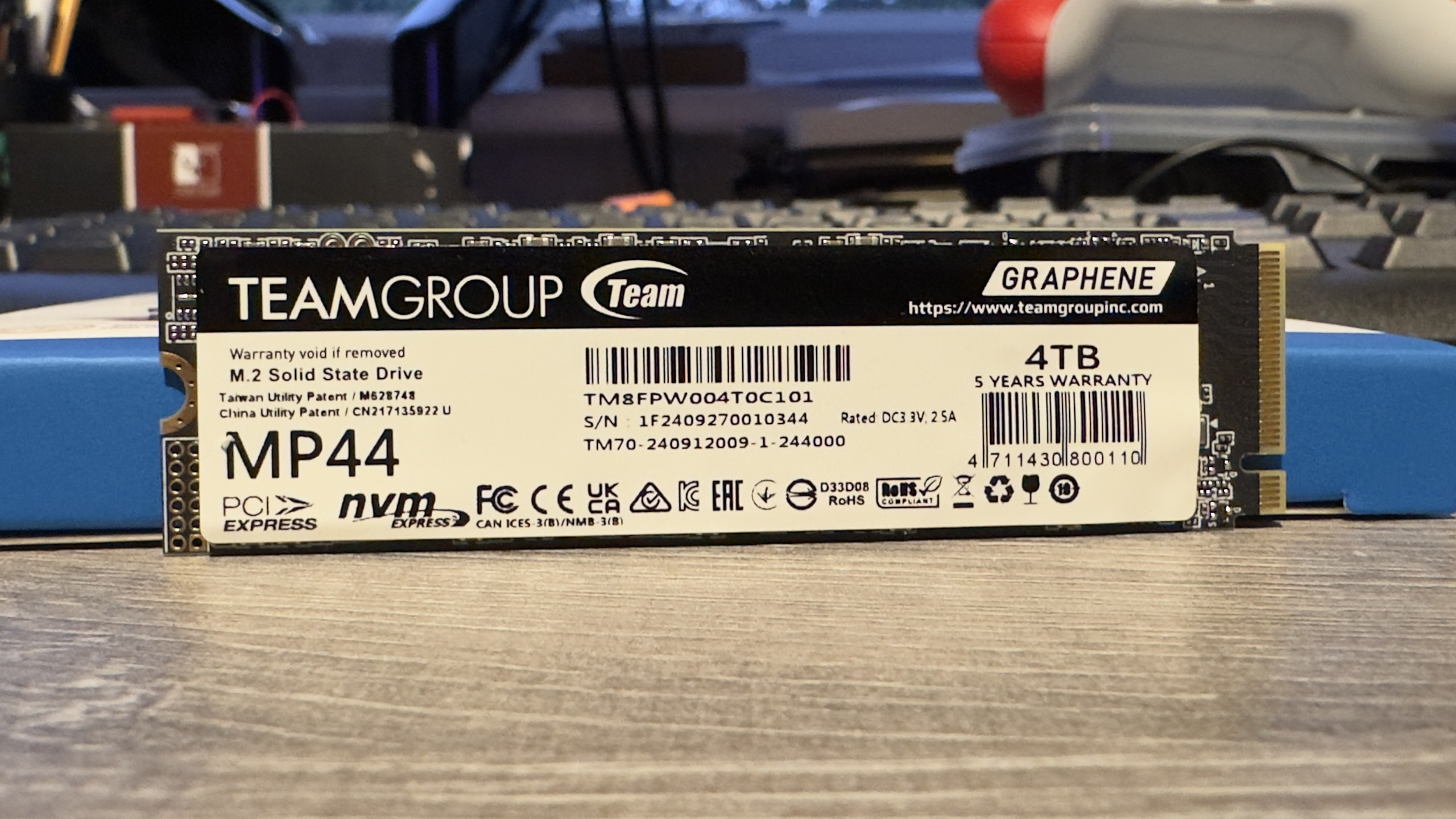
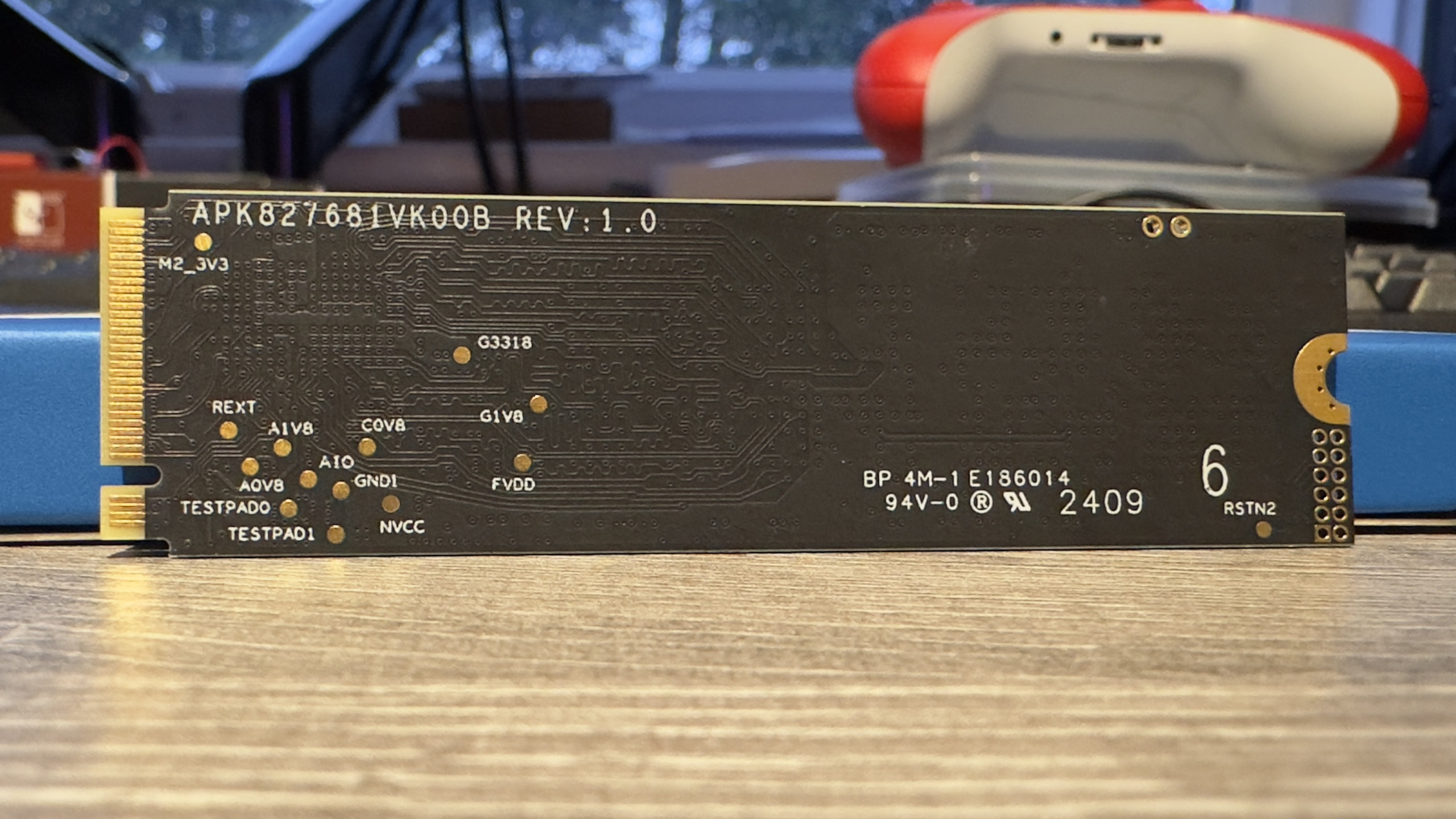
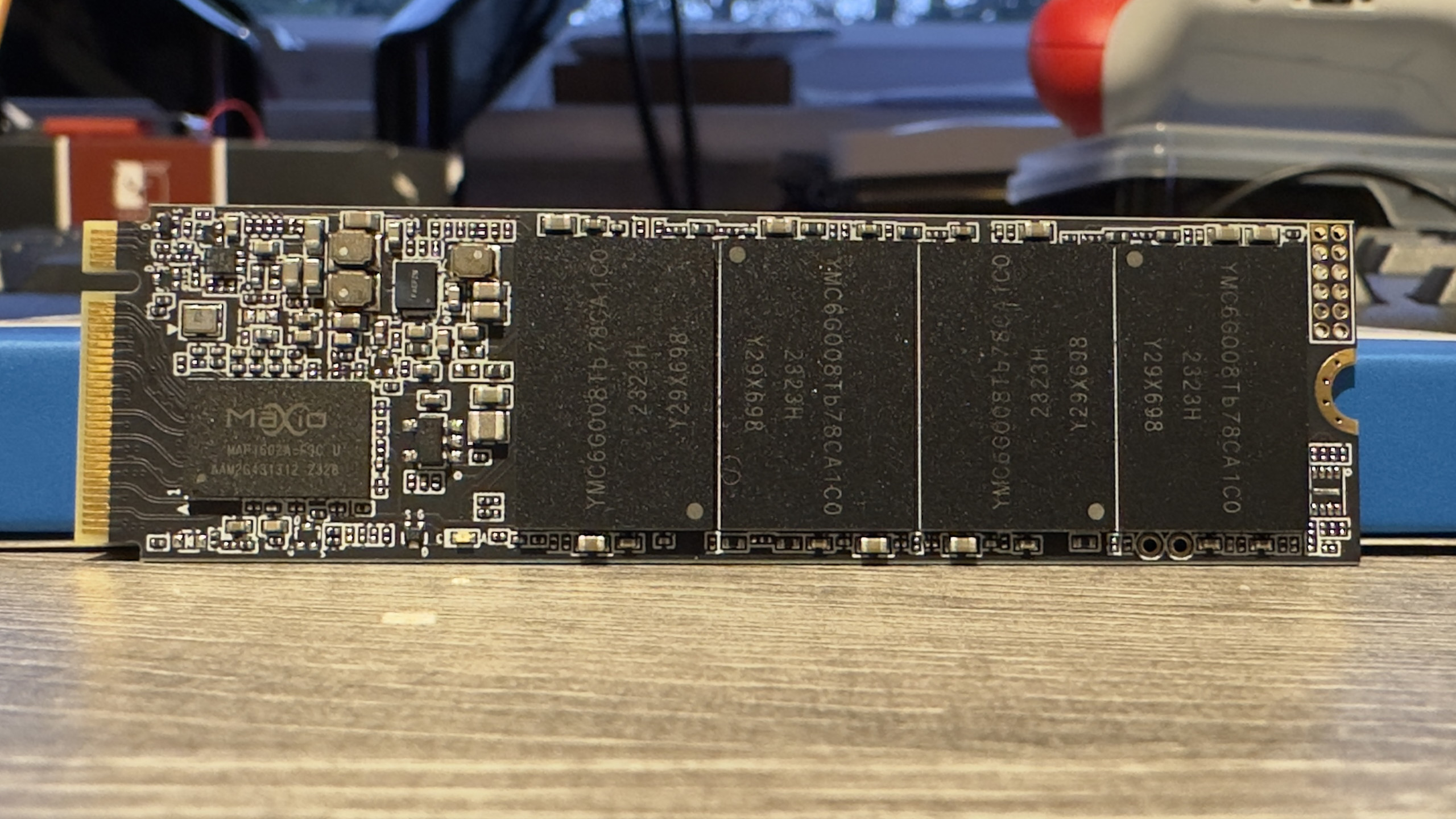
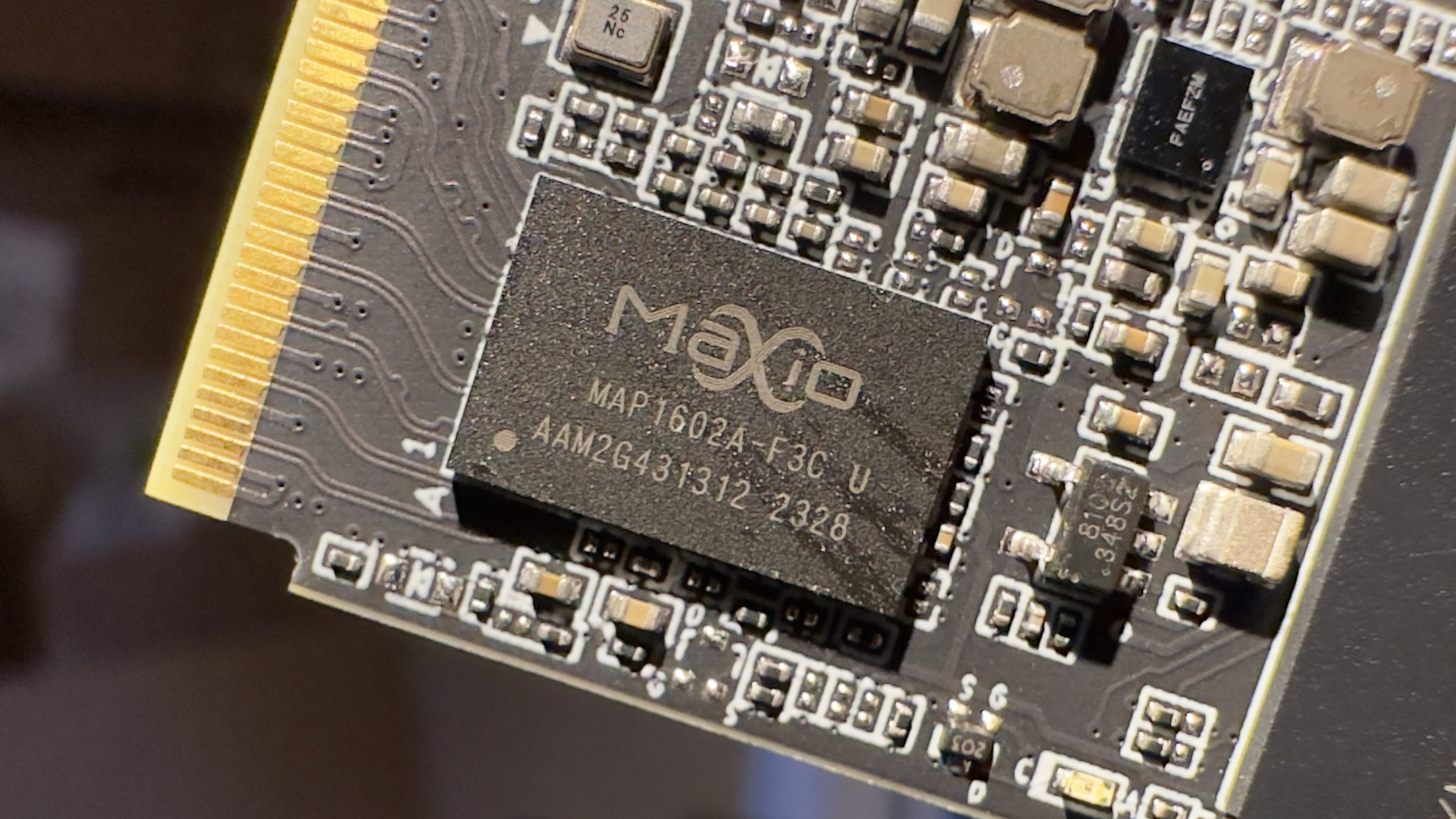
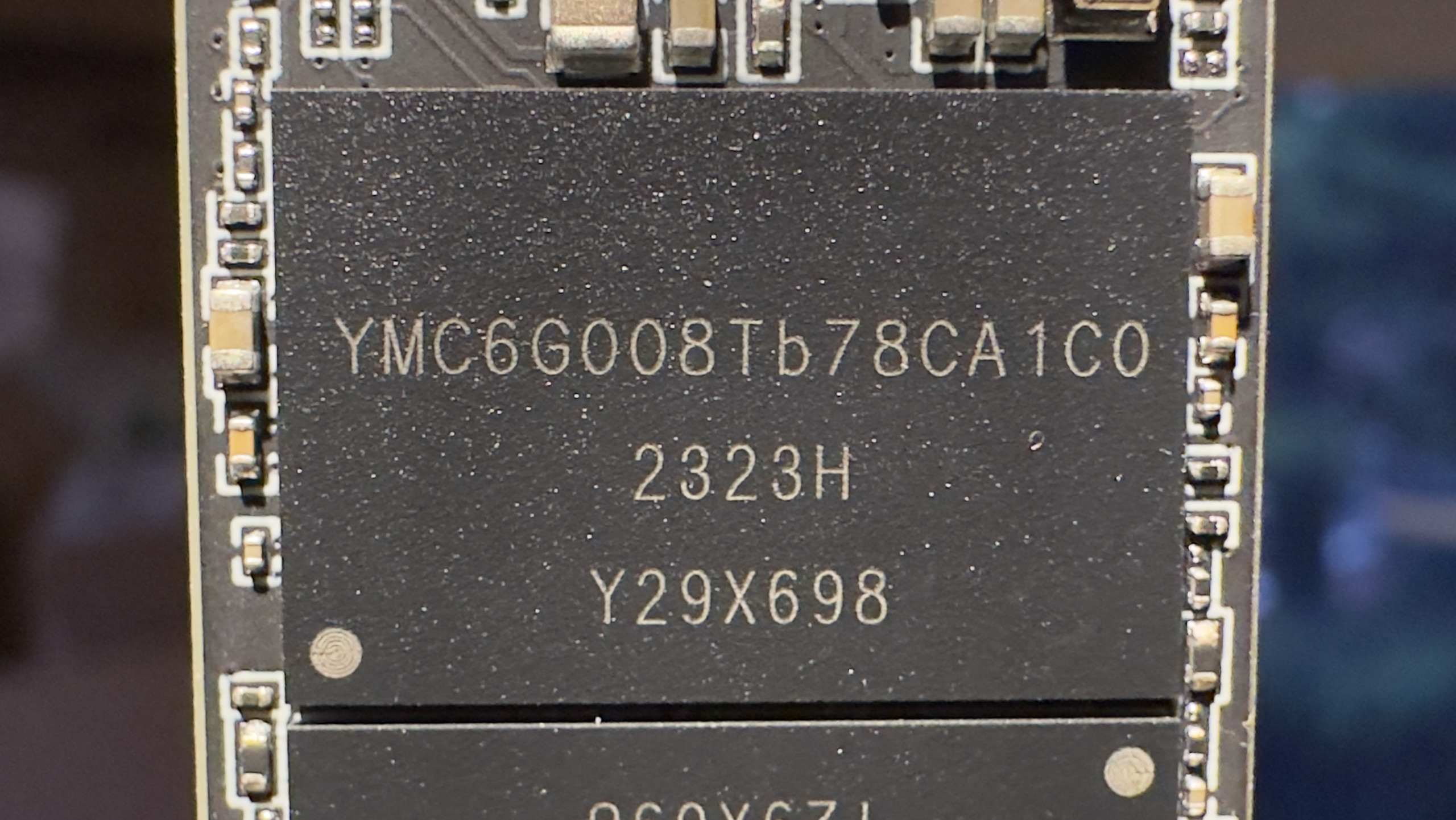
Specifications
Reasons to buy
Reasons to avoid
Nick says: "The Team Group MP44 is an excellent SSD, with bags of performance and capacity, in this 4 TB model. With a huge SLC cache, it can sustain data writes for a long time but it does need a decent cooling solution to stop it from thermally throttling."
Read our full Team Group MP44 4 TB review.
With game install sizes just getting bigger and bigger (120 GB+ isn't unusual at all), 1 TB drives just aren't big enough. Even 2 TB might be a bit slim if you're using it to host the operating system, apps, and games. Fortunately, 4 TB SSDs are really dropping in price, and the best high-capacity gaming SSD right now is the Team Group MP44.
It's important to first note that Team Group has multiple 'MP44' SSDs available, such as the MP44Q, MP44S, and so on. The one you want is just the plain ol' MP44, but thanks to sharing the same hardware as the fantastic Lexar NM790, there's nothing plain about its performance.
There are some differences, though. While the Team Group MP44 has a larger dynamic pseudo-SLC cache than the NM790 (which is used to keep write speed as high as possible), once the drive fills up a bit, the data transfer rate drops lower than it does on the Lexar SSD.
It also has a lower maximum operating temperature, and while it doesn't run especially hot for such a speedy drive, you will want to make sure that the MP44 is kept cool under a motherboard M.2 heatsink to make sure it doesn't throttle performance.
If none of that is an issue and you just want a massive SSD for a not-massive price, then you really can't beat the Team Group MP44.

The best 8 TB SSD
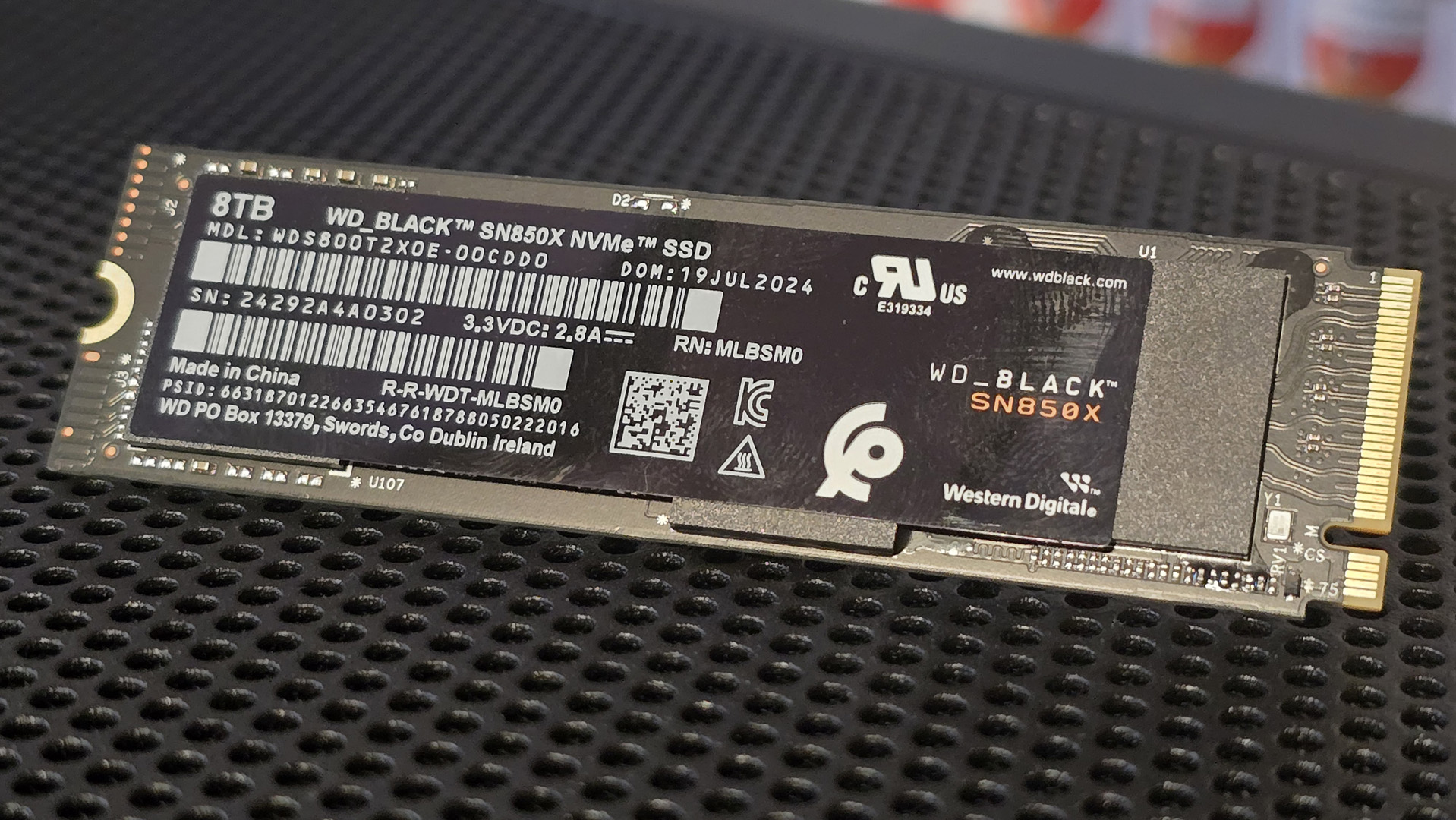
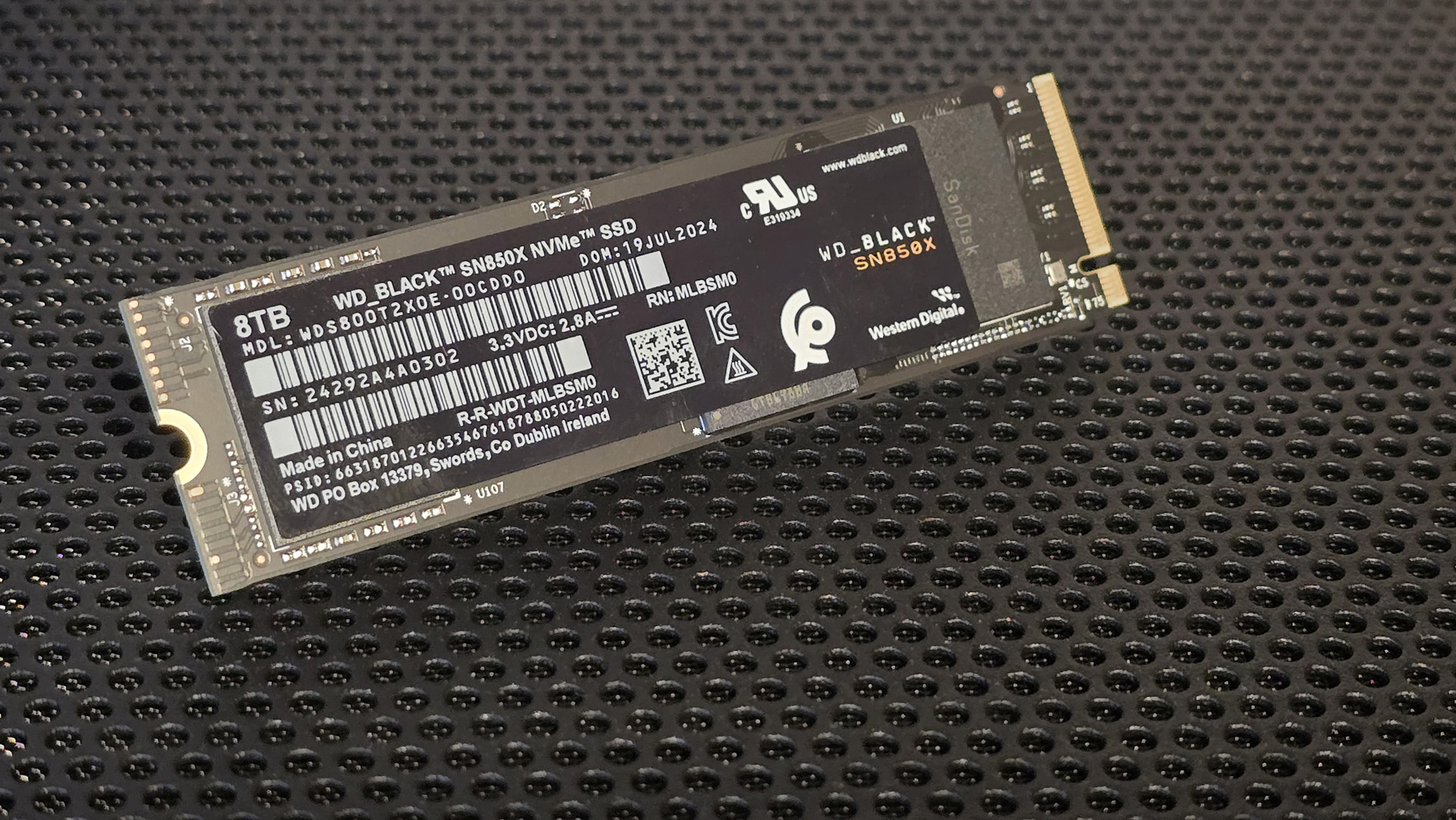
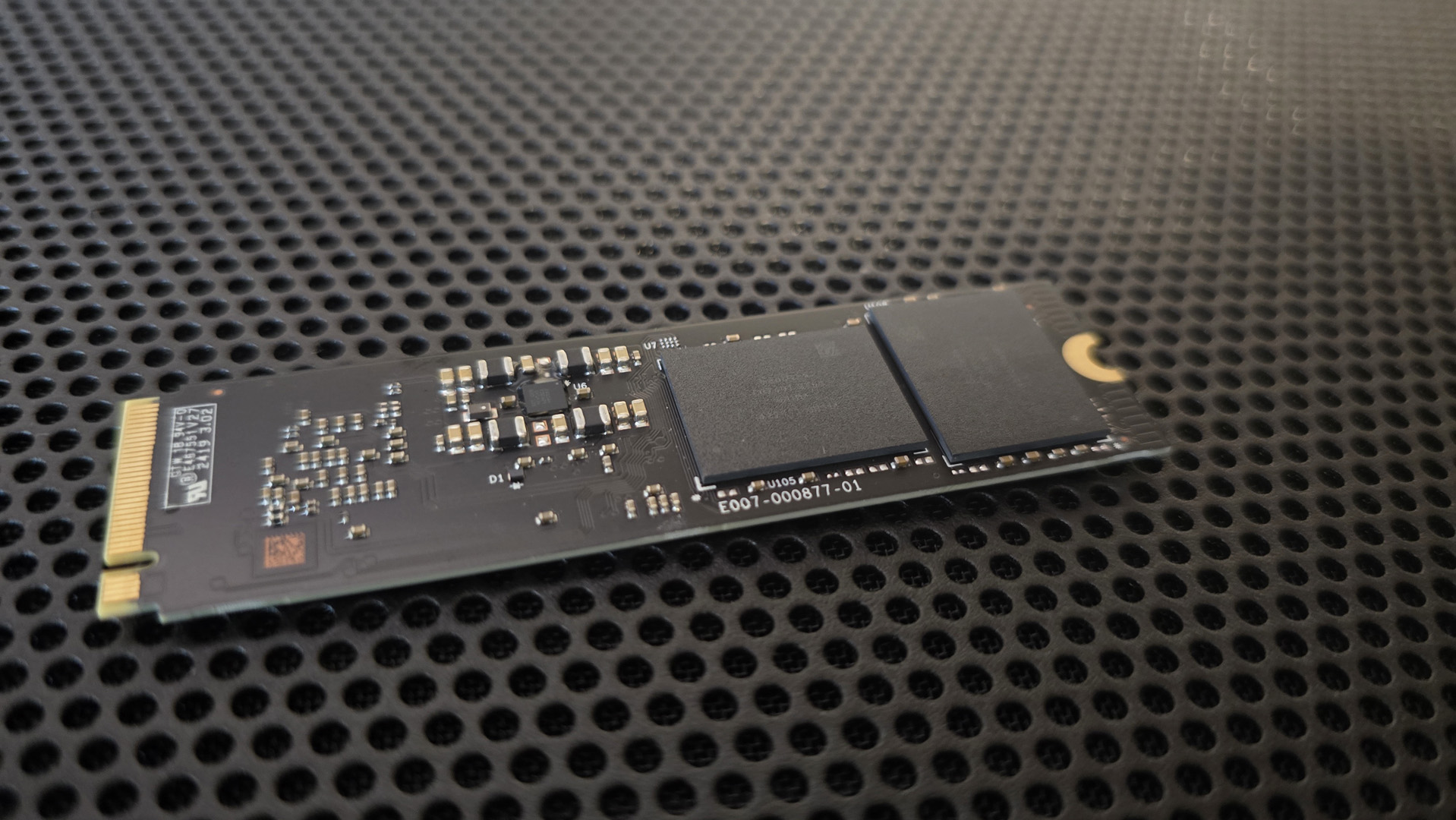
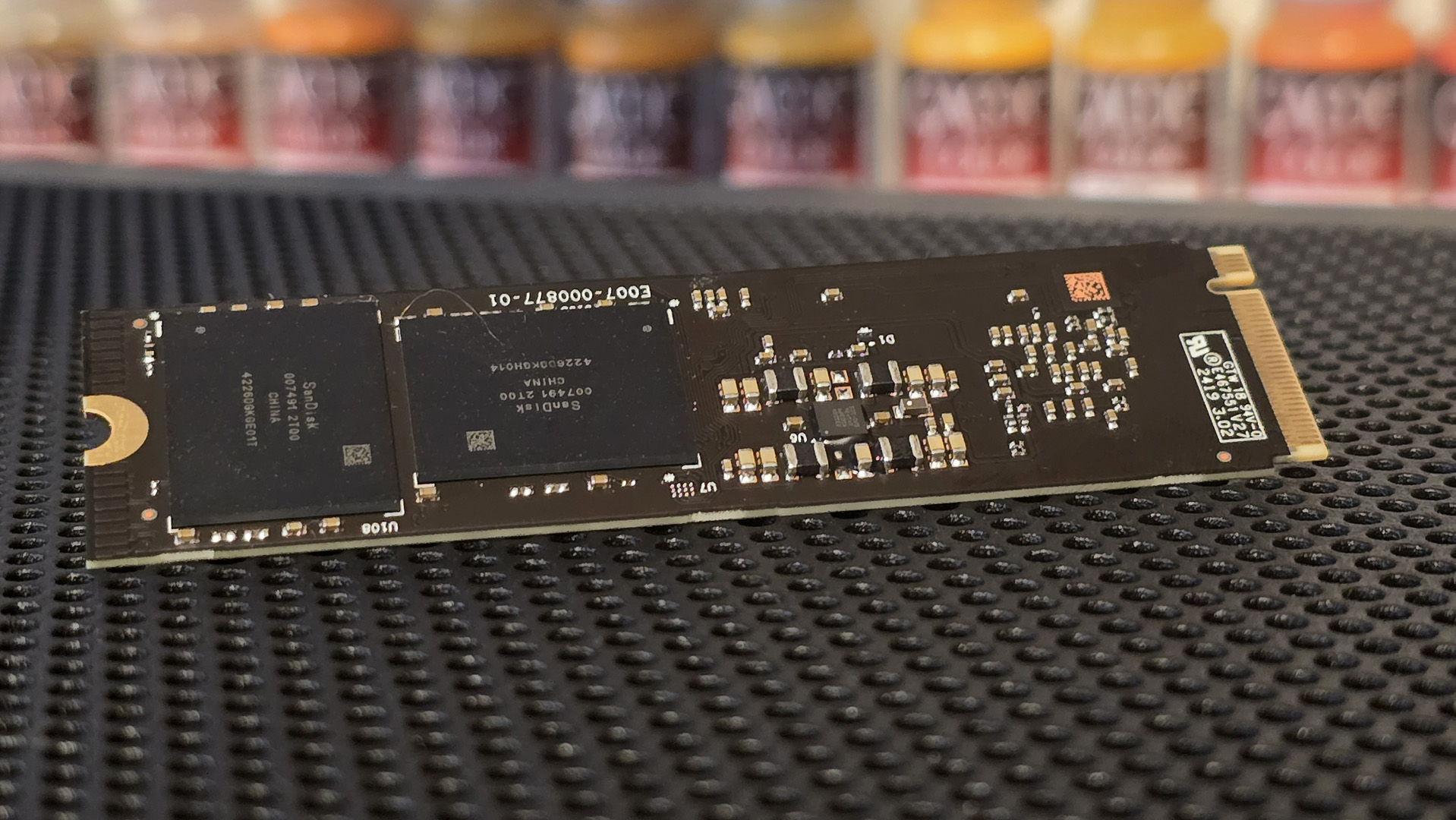
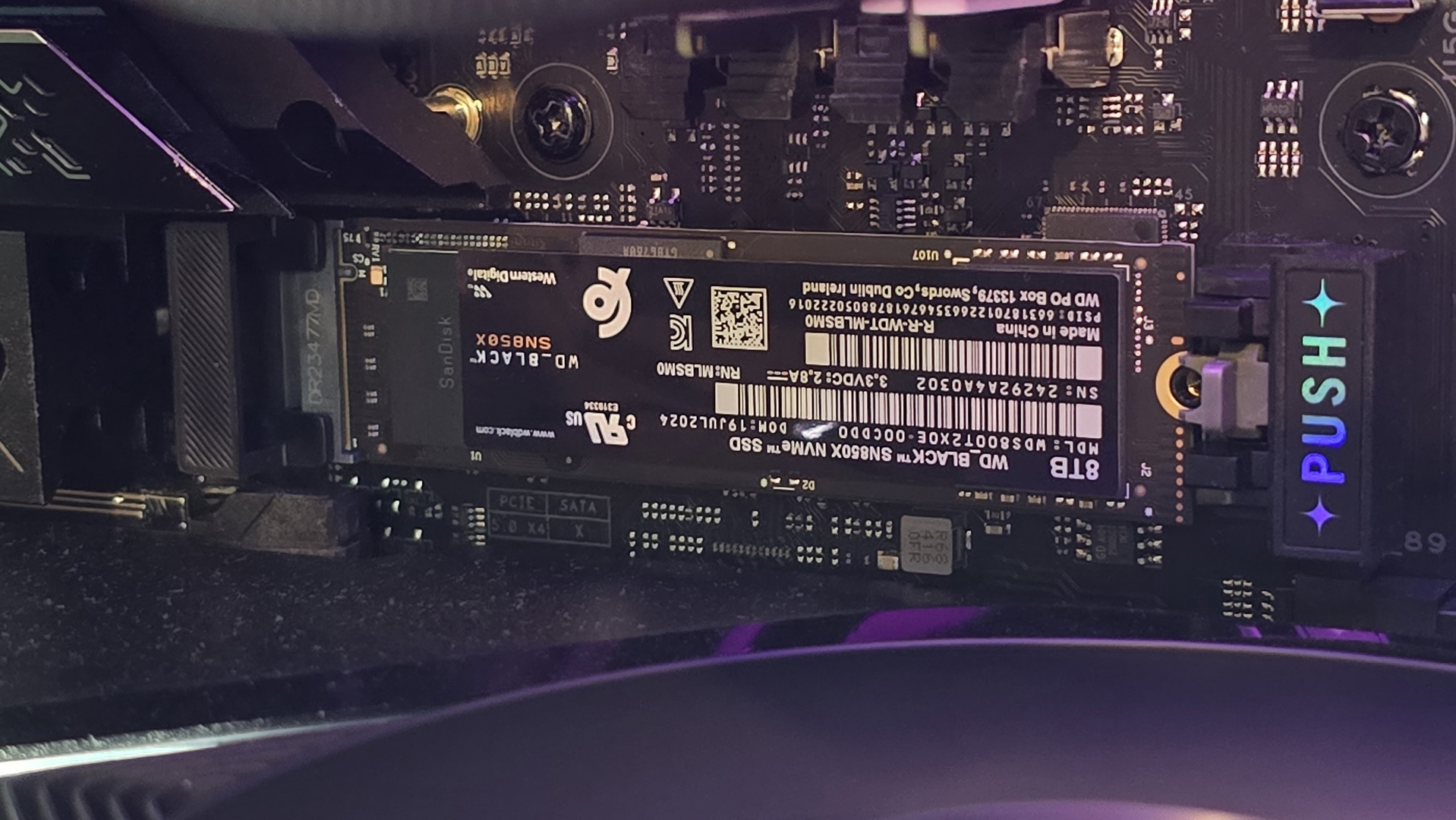
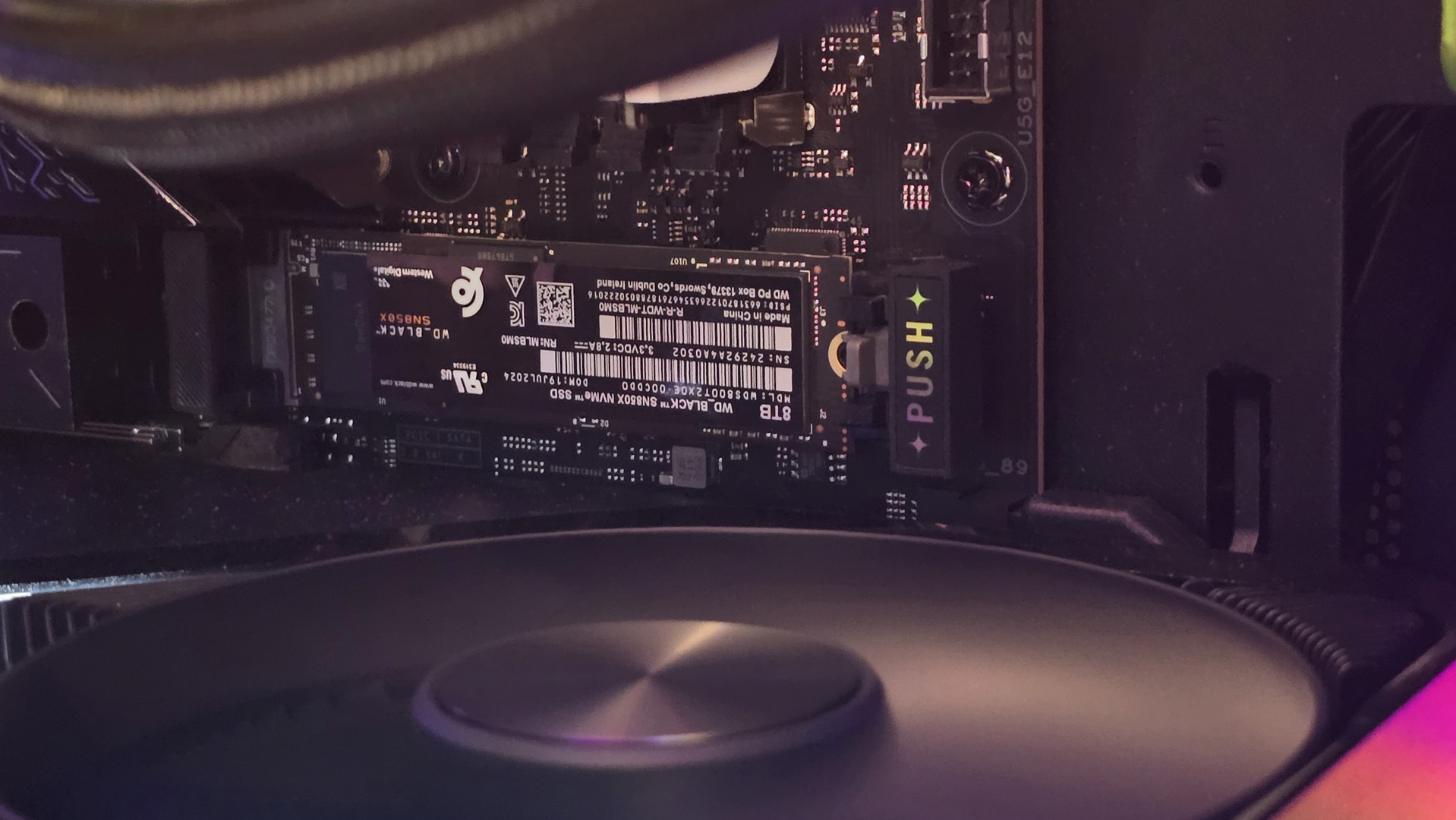
Specifications
Reasons to buy
Reasons to avoid
Zak says: "Western Digital's crammed a phenomenal amount of storage on here, which performs admirably, and provides relatively good value for money. That said, you're still likely far better off getting multiple smaller drives to alleviate any backup woes."
Read our full WD Black SN850X 8 TB NVMe SSD review.
I wouldn't blame you for doing a double-take. Isn't this the same drive we recommend as the top SSD for gaming overall? Sort of. But many moons since its first release, WD followed up with this ultra-huge version, and as a result, the WD Black SN850X 8 TB has proved itself worthy of the best 8 TB SSD title overall.
There are a few questions you need to ask yourself before buying one of these monster drives, however. Number one, do you really want to drop this sort of cash?
The 8 TB version of the WD Black SN850X has an MSRP of $649, although I've seen it lower since its release, as NVMe drive prices tend to fluctuate with the prevailing winds. Still, it's an astonishing amount of money for a single storage component, although you are, of course, getting a similarly astonishing amount of space for your money.
Still, two 4 TB drives (like the Team Group MP44 above) are usually cheaper. You'll have to really be dead set on a single 8 TB drive to look here—and there's always the redundancy angle to factor in, too.
The PC Gamer hardware team has used many, many WD SN850X drives over the years, and they're remarkably reliable. But putting all your data eggs in one 8 TB basket means that, if it does give up the ghost, you've likely lost a huge amount of files in one single hit.
Ah, enough naysaying. If an 8 TB drive is truly what you desire, the read and write speeds on offer here are excellent, putting in a turn of 7,100 MB/s and 6,590 MB/s respectively in our testing. What's not so hot are the random 4K numbers, meaning that this should probably be viewed more as a fast storage drive with gaming potential than a full-time, top-spec gaming drive.
Housing four NAND chips instead of the usual two seems to create a small amount of latency, and that's reflected in the 4K performance. It's still fast enough to game on, no doubt, but there are better SSDs for outright gaming.
Still, those of you who regularly handle huge amounts of large media files (I'm looking at you, video editors and photographers) might want a mighty 8 TB single drive, and this one's a corker for that very purpose.
There are caveats to a single 8 TB NVMe SSD, no doubt, but if you've got your heart set on one, the WD Black SN850X 8 TB is the drive to go for. Just make sure it fits your use case before pulling the trigger, yes?

The best 2230 SSD

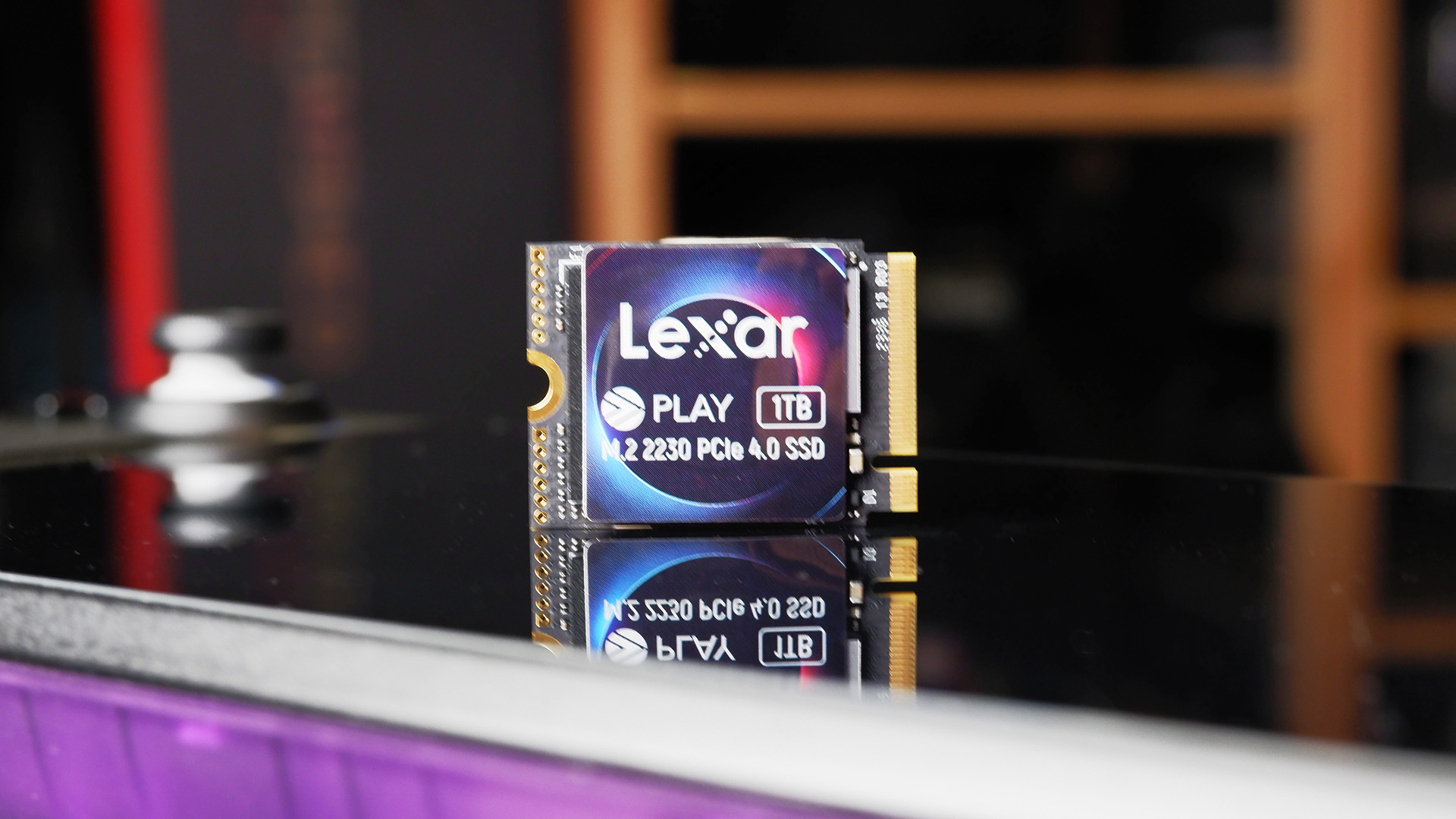
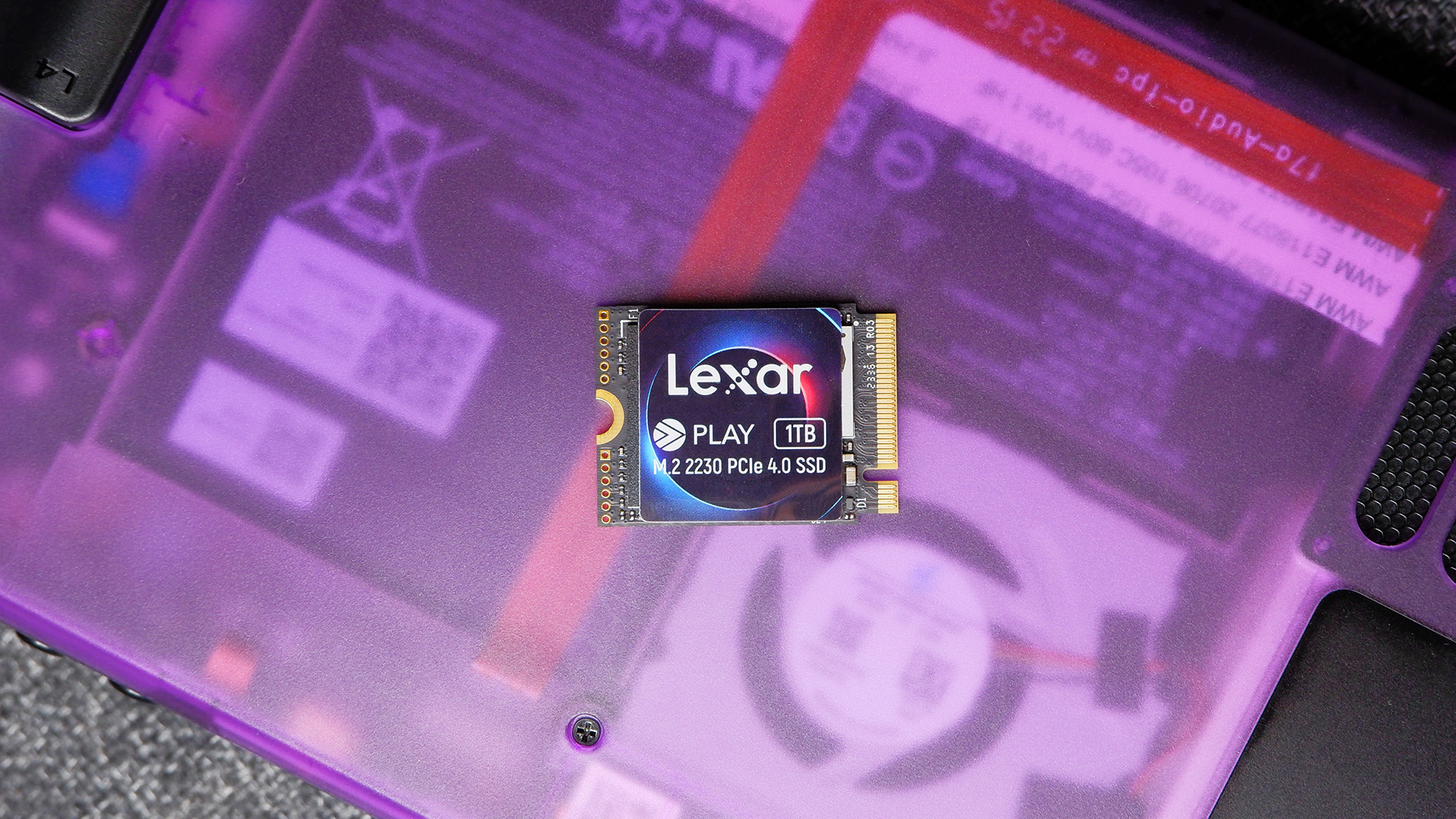
Specifications
Reasons to buy
Reasons to avoid
Jacob says: "With solid performance, low temps, and an affordable price, the Lexar Play 2230 swoops in and wins my recommendation for the best 1TB SSD to stick in a Steam Deck, ROG Ally, or Legion Go."
Read our full Lexar Play 2230 1 TB SSD review.
Lexar is relatively new to the SSD scene, but it has rapidly made a name for itself by offering fast storage, with bags of capacity, and all at sensible prices. Its Play 2230 model is no exception, and it's by far the best 2230 SSD we've had the pleasure of testing.
Underneath the label is 1 TB of Micron TLC NAND flash memory and a Silicon Motion SM2269XT controller. That's surprisingly decent stuff for a drive that's marketed at the handheld PC category, and they help the SSD's performance considerably. In our testing, we found that the claimed peak read/write figures of 5,400 and 4,700 MB/s were very accurate, so you're getting exactly what it says in the specs.
Better yet, the Lexar Play has a large pseudo-SLC cache—this is the portion of the flash memory that acts as a buffer for data, helping it maintain performance when writing lots of information. In a sustained write test, we measured the cache to be around 240 GB, which is pretty big for this type of SSD.
And the good news keeps on coming, as the Lexar Play doesn't get hot, even when pushed hard. With average operating temperatures around the 40°C mark and peaks of 53°C, your Steam Deck, Asus ROG Ally, or similar won't get any toastier just because you've installed a fast SSD.
There's only one downside to the Lexar Play: the capacity range on offer. 1 TB is currently the largest model on offer, and there's plenty of competition with larger capacities, such as our previous recommendation for Steam Decks, the Sabrent Rocket 2230. Relatively few retailers also seem to have it in stock, which makes it harder to pick one up for a good price.
Still, 1 TB is a decent enough amount of storage, and when it's this fast, cool, and affordable, you really can't complain.

The best SSD for PS5
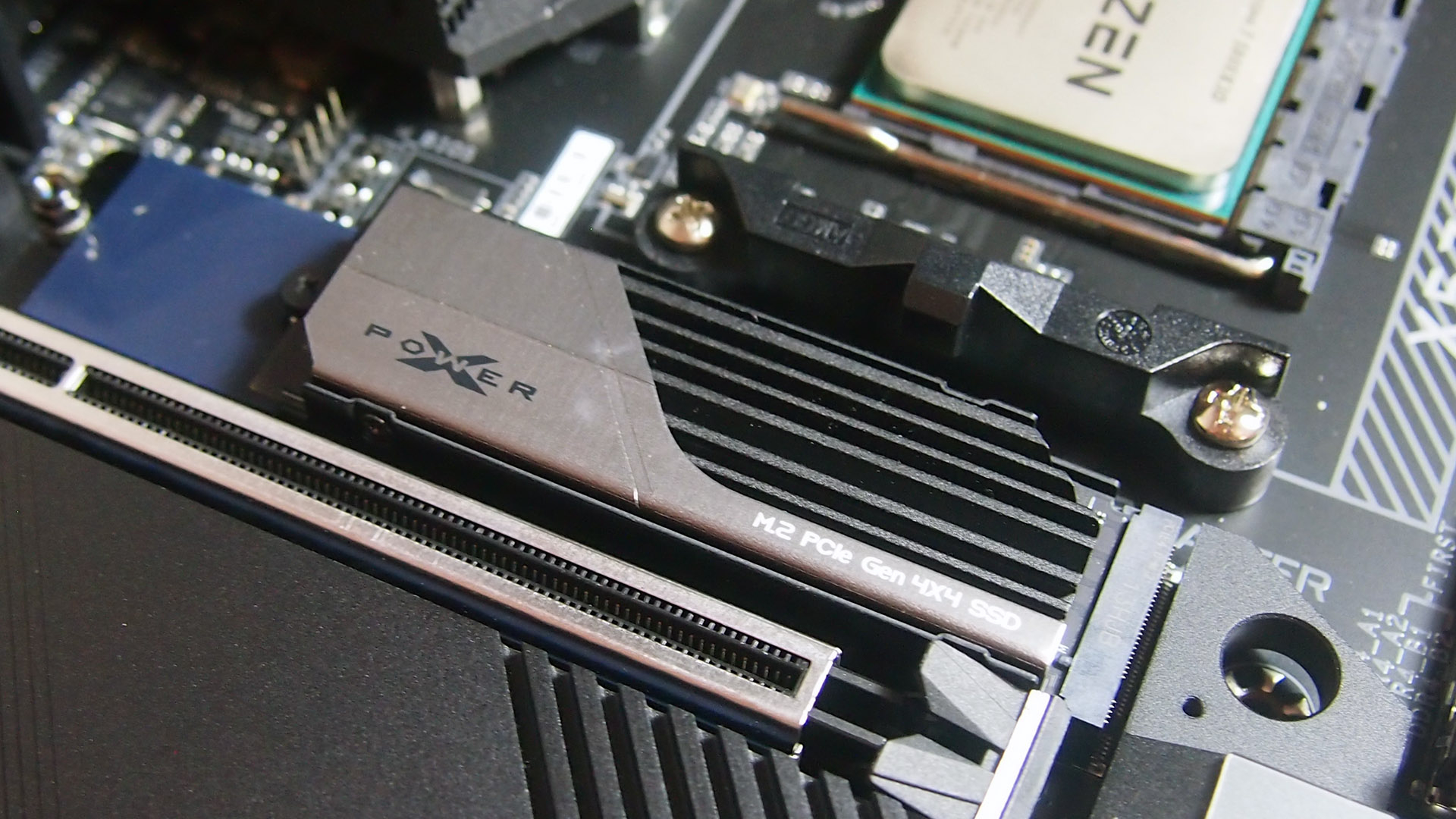
Specifications
Reasons to buy
Reasons to avoid
Chris says: "The Silicon Power XS70 is an excellent all-round drive, though the competition never stands still."
Read our full Silicon Power 2 TB XS70 review.
Console gaming? On the PC Gamer website? Why absolutely. We're not total PC snobs here, we'll have you know, and even we enjoy the odd session on a PlayStation 5. The trouble is, the Gen 4 drive that's included as standard delivers good performance, but it isn't the fastest or the largest. So why not give it an SSD spruce up? Should that be your heart's desire, I can think of none better than the Silicon Power XS70 as my top pick for the best gaming SSD for the PS5.
With the release of the new PS5 Pro and its 2 TB SSD, you might be forgiven for feeling a little jealous looking at your old PS5 now, but sticking a new drive into your existing console is incredibly straightforward—and this Silicon Power SSD is a beaut.
Silicon Power is a brand that probably doesn’t get much attention compared to the likes of Samsung or WD, but when you look at its XS70 NVMe SSD with its high-end specifications, it's clear that the brand name isn't everything. Armed with the latest Phison controller and high-performance NAND flash memory, a drive like the Silicon Power XS70 has no problem competing with the best SSDs on the market.
The XS70 has a hardware combination that is common to many of the best SSDs, including the highly regarded Seagate FireCuda 530 and Kingston KC3000. That puts it in some fierce company, but I'm happy to report this little drive more than holds its own, with blazing fast read/write speeds of 7,300 MB/s and 6,800 MB/s respectively.
It's fully designed with PS5 compatibility in mind, so the heatsink isn’t as bulky as some others you might come across. In fact, it looks more like a flash drive, but don't let that put you off. When it comes to loading up your favourite PS5 drives in double quick time, this little wonder has you covered.
It's a highly competitive gaming SSD with great performance, an attractive design, and it offers good value for money. It's not perfect, in that it lacks its own software and hardware encryption, but whether you're a PS5 or PC gamer, that won't matter. Load it up with your game library, whether that's console or otherwise, and I reckon you'll absolutely love it.


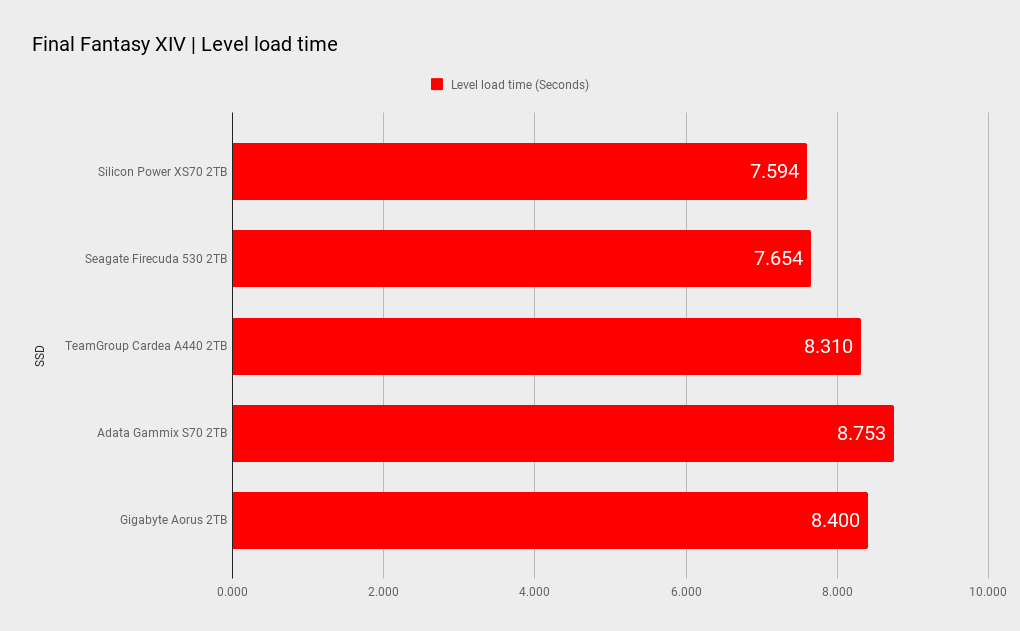
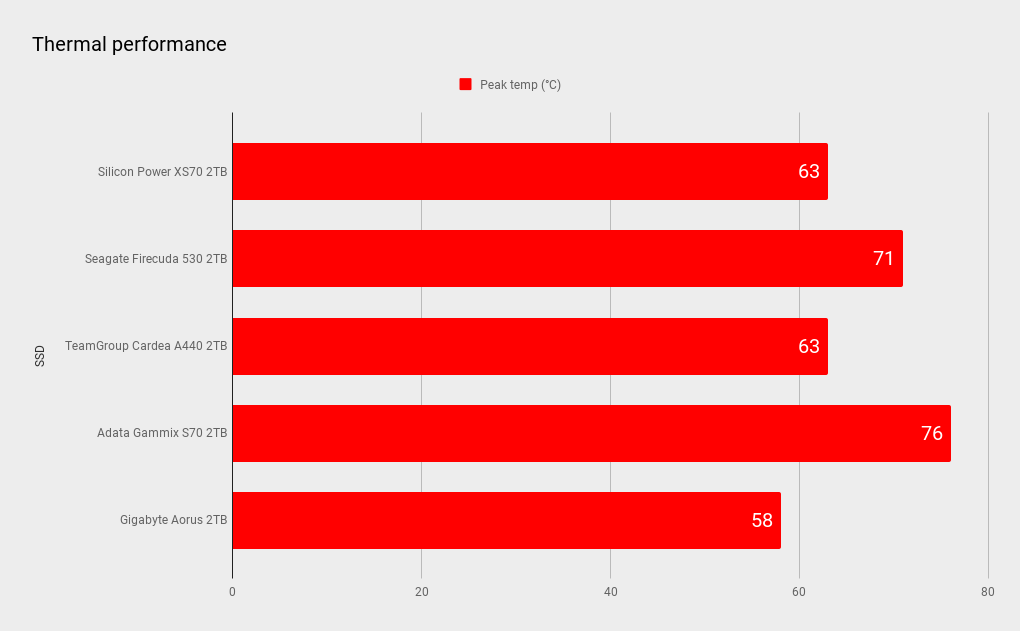
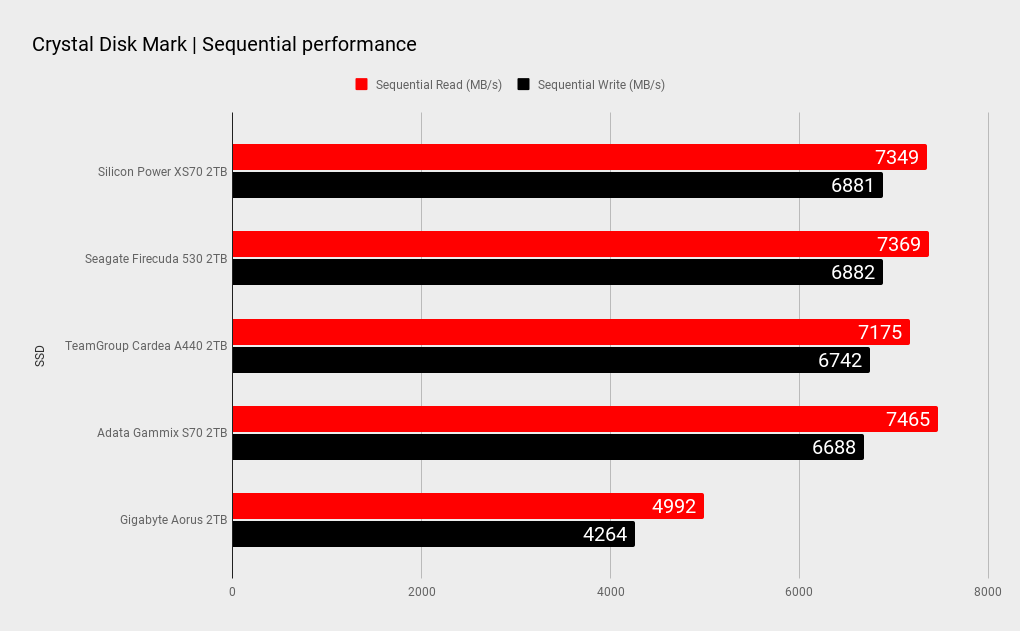
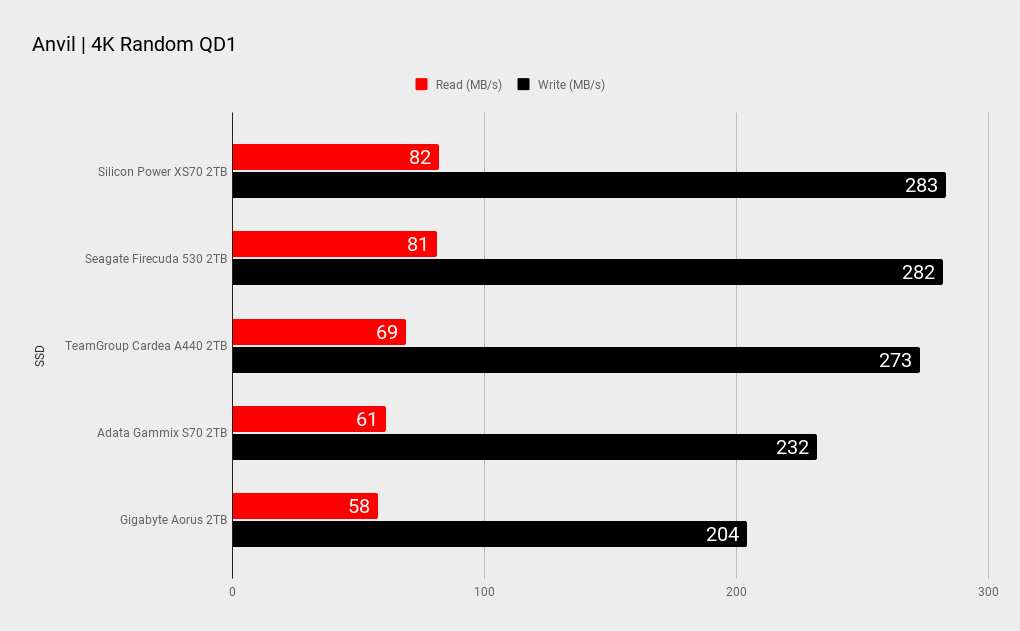
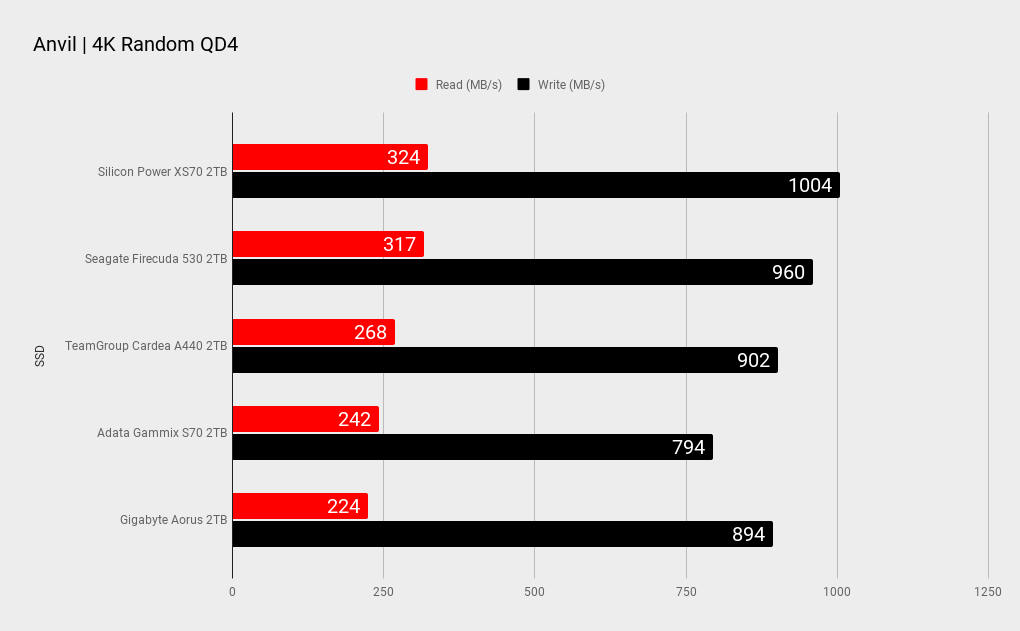
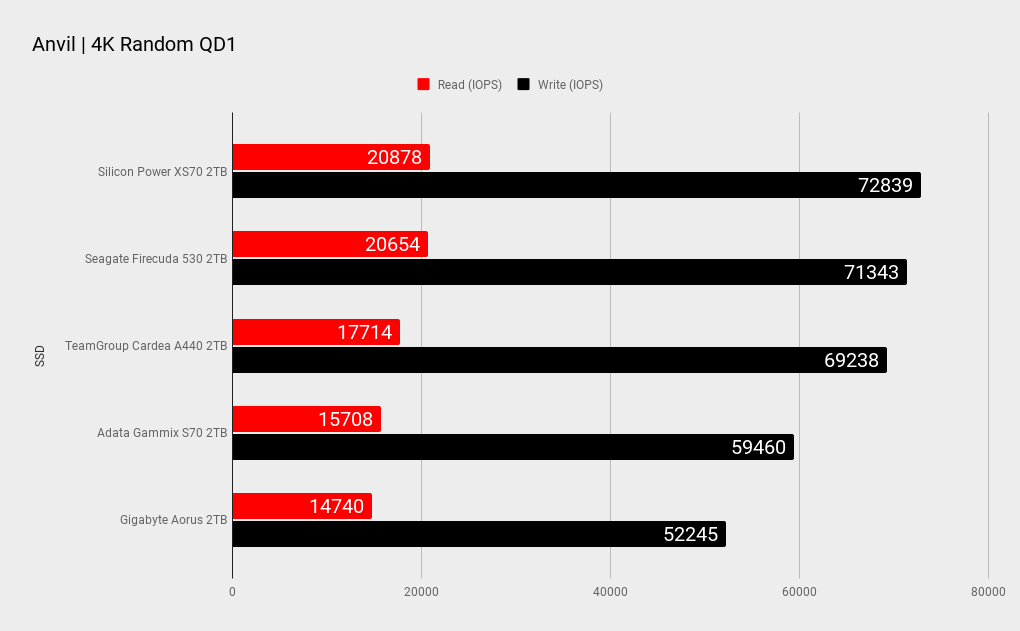

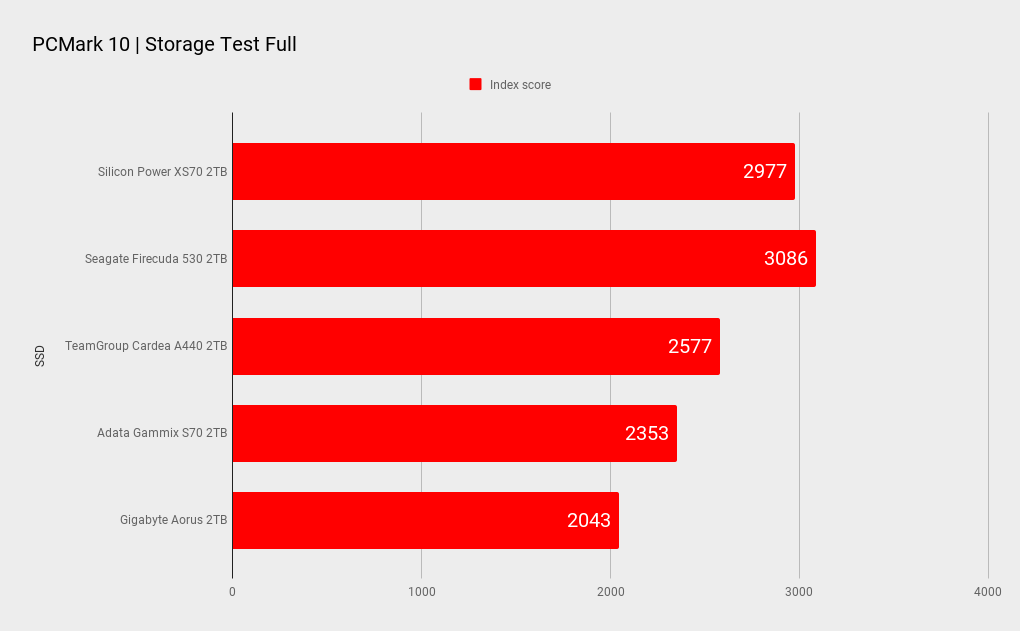
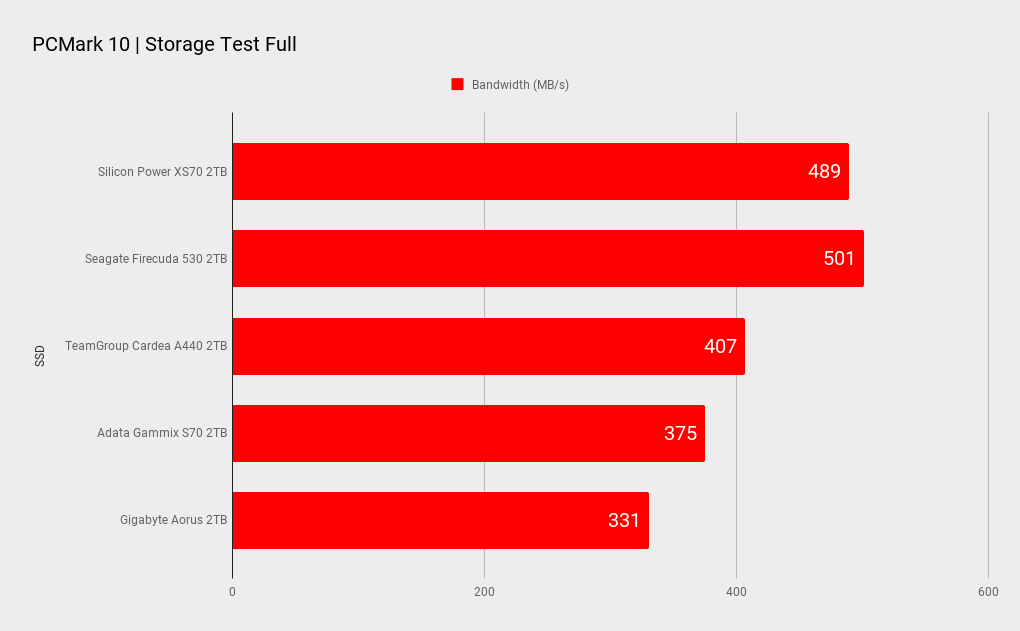
November 17, 2025: I have made our benchmark testing more visible to help you make your choice between difference drives, and to see why we've made the recommendations we have. I have also taken the decision to ditch the best SATA SSD section, as they simply don't make sense in a guide for the best SSDs for gaming in 2025. For back up, yes, for primary game storage, not so much.
September 17, 2025: I have completely updated our testing methodology and included the details of the panel of writers and industry experts we use when it comes to testing SSDs and to figure which of them actually deserves to be listed as the best SSD for gaming.
August 12, 2025: We've swapped out the Lexar NM790 for the Biwin Black Opal NV7400 as our new budget SSD pick. The Biwin offers high capacity for a low price tag, and it's only just starting out, with a shockingly low MSRP. Let's hope it drops from there.
Also tested
Crucial T710
Micron's paired that "legendary" controller with its latest and greatest NAND flash in a bid to rout Sandisk's dominant hold on the PCIe 5.0 market, and it's done a fine job at that. By bringing the price down dramatically and delivering almost market-topping performance, the T710 represents fantastic value for some top-tier performance, all while keeping itself impressively cool in the process.
PC Gamer score: 90%
Read our full Crucial T710 review.
Kioxia Exceria Plus G4
The Kioxia gets a lot right: the controller and flash combination is smart in many ways, and it's cool-running too. Though it's generally beat by the Crucial P510 on price, and that's the one we'd go for.
PC Gamer score: 77%
Read our full Kioxia Exceria Plus G4 review.
SK Hynix Platinum P51
A serious performer of a PCIe 5.0 drive, with very impressive game load times and a lot to offer. It's expensive, though, and loves to run hot.
PC Gamer score: 83%
Read our full SK Hynix Platinum P51 review.
Biwin Black Opal X570 Pro
The 4K performance on offer from this PCIe 5.0 drive is excellent, and the sequential results aren't bad either. However, a lack of worldwide ability and some unimpressive temps spoil the mix, somewhat.
PC Gamer score: 73%
Read our full Biwin Black Opal X570 Pro review.
Samsung 9100 Pro
For a first attempt at a Gen 5 SSD, Samsung has done a decent job with the 9100 Pro, with great sequential performance and power efficiency. However, the price is significantly higher than the competition, and there's little benefit to gaming with PCIe 5.0 drives.
PC Gamer score: 77%
Read our full Samsung 9100 Pro review.
WD Blue SN5000
Got a lot of games? Well, this SSD definitely has room and the load speeds you'd hope for. Unfortunately, that all comes at a premium price, alongside less-than-stellar thermal regulation.
PC Gamer score: 67%
Read our full WD Blue SN5000 review.
Corsair MP700 Elite
Boasting phenomenally cool performance for a PCIe 5.0 drive, plus impressive random 4K performance, you're left with one question: What's it doing down here and not up top? The bottom line is price, with other SSDs promising better performance for your money. A limited range of storage sizes—only 1 TB and 2 TB currently—seals its fate.
PC Gamer score: 83%
Read our full Corsair MP700 Elite review.
Nextorage NEM-PA
This drive was our top recommendation for best high-capacity SSD for a long time, but it's very hard to find in stores and seems to have been replaced by the DRAM-less NEM-PAB version. If you can find one, then grab it while you can.
PC Gamer score: 90%
Read our full Nextorage NEM-PA review.
Samsung 990 Evo Plus
There's plenty to like about the Samsung, not least that it comes from one of the most respected names in the industry. Still, while the sequential performance is great, the random 4K numbers are less so, and there's still that issue with price.
PC Gamer score: 74%
Read our full Samsung 990 Evo Plus review.
Crucial P310
It's a decent enough storage upgrade for your handheld gaming PC, but there are faster drives out there, and it gets hot when worked hard for a while.
PC Gamer score: 79%
Read our full Crucial P310 review.
WD Black SN770M
If you want to give your handheld gaming PC a decent boost in storage capacity and performance, then the SN770M is seriously worth considering. Prices vary a lot, though, and it gets quite toasty when being worked hard.
PC Gamer score: 85%
Read our full WD Black SN770M review.
Seagate FireCuda 540
As PCIe 5.0 drives go, this is a very fast performer. That being said, there's still not much real-world reason to buy one over a good PCIe 4.0 drives, so we still recommend you save your money on one of the SSDs above.
PC Gamer score: 72%
Read our full Seagate FireCuda 540 review.
Crucial P3 Plus 2 TB
You get a lot of capacity for your money here, but SLC cache worries and a slightly skewed price/performance metric makes this a tough drive to recommend over the competition.
PC Gamer score: 70%
Read our full Crucial P3 Plus 2 TB review.
WD Black SN770
A very solid and speedy NVMe drive, this, but the WD Black SN850X does it better—for roughly the same money. Still, if you can find a good deal on one it's a great pick, although it does run hot.
PC Gamer score: 87%
Read our full WD Black SN770 1 TB review.
Samsung 990 Pro 2 TB
Samsung are a go-to name in the world of storage, and the 990 Pro is certainly a performer. But when you can get similar performance for less, there's not a whole lot of reason to opt for this drive, despite its impressive numbers.
PC Gamer score: 87%
Read our full Samsung 990 Pro 2 TB review.
Kioxia Exceria Pro 2 TB
It was well-priced on launch, this Gen 4 SSD, but the performance is off the pace. Plus, while SSD drives aren't as cheap as they used to be, you can still find better deals.
PC Gamer score: 71%
Read our full Kioxia Exceria Pro 2 TB review.
Our panel of SSD experts

Zak Storey is a long-time industry veteran, having started out in the old tech magazine era, cutting his teeth on PC Format and Maximum PC. Both of which were publications which went in-depth into hardware testing, and gave him a great grounding across the board. He went on to become editor-in-chief of Maximum PC before a brief sojourn across to the dark side of tech PR with Corsair. Zak is an expert in PC building and you can find him creating new builds alongside our Jacob here on PC Gamer, and he has also become our go-to person for SSD testing, showing off his expertise in storage testing.

Jacob Ridley has been writing about PC hardware for the past decade, initially for his own tech blog, but then as a full-time technology-testing journalist with PCGamesN. He joined PC Gamer in 2020, where he has taken on the mantle of managing editor of the growing hardware team. He is an all-rounder when it comes to PC technology, having tested every category of hardware it is possible to test, but he has also worked to create a robust SSD testing methodology which we use throughout our testing of storage devices.

As a 30-year veteran, Nick Evanson has a huge amount of both computing knowledge and experience in the industry and within education about it, too. After leaving university he became a physics and IT teacher, but also moved into tech writing in the late '90s. He wrote the help files for both industry standard benchmarks, 3DMark and PCMark, before going on to become editor-in-chief of YouGamers, Futuremark's PC gaming brand. He has also subsequently worked as an engineering and computer science lecturer, and has spent far too much time figuring out how GPUs and SSDs work. As well as a lot of experience testing CPUs and motherboards, he has also tested solid state drives in various forms, from SATA to every flavour of PCIe generation.
How we test SSDs
We use a selection of industry standard benchmarking tools to rigorously test each and every drive that comes across our desk. As standard we run internal SSDs in an AMD AM5-based system and for the past year we have been running on a Ryzen 9 9900X CPU as we have found it a more stable platform than either Alder Lake or Raptor Lake Intel systems. At least the chip won't bend...
We also test each drive with a live Windows 11 operating system installed on it so we get a sense and hard data about how a drive performs as a boot drive rather than just as a dumb data storage medium.
As a basic read on the read/write performance of each drive, we use CrystalDiskMark 7.0.0 to measure the sequential performance as well as the 4k random speeds. This gives us a bead on the transfer speeds of the SSDs when shifting data around, as well as the tiny read/write tasks a drive housing an operating system will be regularly doing. High 4k random read/write performance is indicative of a slick-feeling system, so is a key metric for us.
Because we are PC Gamer, we also want to know how a drive will feel when it comes to loading in our favorite games. The 3DMark Storage Benchmark using captured I/O traces from a selection of games and gaming activities to deliver a real-world snapshot of how a given SSD will perform under those circumstances. The traces currently used are:
- Loading Battlefield V from launch to the main menu.
- Loading Call of Duty: Black Ops 4 from launch to the main menu.
- Loading Overwatch from launch to the main menu.
- Copying the Steam folder for Counter-Strike: Global Offensive from an external SSD to the system drive.
- Recording a 1080p gameplay video at 60 FPS with OBS (Open Broadcaster Software) while playing Overwatch.
- Installing The Outer Worlds from the Epic Games Launcher.
- Saving game progress in The Outer Worlds.
We also use the Final Fantasy XIV: Shadowbringers game load time benchmark to give us another, live measure of level load times in a real-world gaming example.
Sustained write performance is another key metric when it comes to SSDs as long-term performance can be very different from shorter, bursty transfers of smaller data sizes. We have created a testing methodology using IOMeter to give us an insight into the sustained performance of a given drive over a 15 minute period.
Finally, temperature has become another key indicator of SSD performance given that modern PCIe 5.0 SSDs have become far more toasty, and sometimes to a level where that ends up throttling performance.
Where to buy the best SSDs

👉The latest SSD deals are right here👈
PC Gamer's got your back
Where are the best gaming SSD deals?
In the US:
Amazon - Up to 50% off internal and external SSDs
Walmart - Deals on internal and external SSDs
B&H Photo - Save up to $50 on NVMe SSDs
Best Buy - Great prices on Samsung SSDs
Staples - Save up to 30% on a range of SSDs, USB sticks, and external SSDs
Newegg - Plenty of NVMe SSDs
In the UK:
Amazon UK - Save on HDDs, SDDs, and external drives
Scan - SATA drives as low as £21
Ebuyer - 500GB SSDs starting from £34.98
Overclockers - Save up to £51 on Samsung SSDs
Currys - Save £32.00 on WD Black SN750
Laptops Direct - Save on SSDs for your laptop
SSD FAQ
Do I need a PCIe 5.0 SSD?
Short answer: No. That's because PCIe 5.0 drives are expensive per terabyte and they're not usually much faster than top PCIe 4.0 drives on random 4K performance.
Long answer: You can find cheaper PCIe 5.0 drives, like the Crucial P510, and others that are worth the extra money, such as the WD_Black SN8100. The latter is one of few PCIe 5.0 drives that notably increases random 4K performance. This is an important stat for gaming, as load times and more rely on the drive reading and writing in small, disconnected chunks, as opposed to the big sequential jobs that these drives nail easily.
You also need to be considerate of thermal considerations with PCIe 5.0. We're seeing newer controllers, like Phison's E31, operate at lower temperatures today, which means it's getting better, but you still want a decent heatsink.
What PCIe generation should I look for?
Right now, PCIe 4.0 is the go-to PCIe generation. That's because it offers high speed at a reasonable cost. The newest gaming SSDs on the market offer PCIe 5.0 capability, which doubles the theoretical bandwidth an SSD can run at. However, these are few and far between and awfully expensive, though are finally getting cheaper. Also, the first drives of any PCIe generation tend to end up much slower than what that generation is truly capable of.
Here are the rough speeds (multiply by 1,000 to get MB/s) for each PCIe generation over x4 lanes:
PCIe 1.0 / Gen1: 1 GB/s
PCIe 2.0 / Gen2: 2 GB/s
PCIe 3.0 / Gen3: 4 GB/s
PCIe 4.0 / Gen4: 8 GB/s
PCIe 5.0 / Gen5: 16 GB/s
Do I need an SSD with DRAM cache?
For most PC Gamers a cacheless SSD will be absolutely fine for their needs and they will see little to no performance degradation using a cacheless drive vs. one with a DRAM cache. But, if you are a content creator, or have other reasons for transferring large amounts of data in a single go, then a drive with a healthy cache might help out in those situations.
But, while a cacheless drive might be a little slower when it comes to read/write speeds (though with modern options, that's less of a problem) they often benefit by being much lighter on the thermals. They generally operate cooler, which makes them a great option for small form factor builds or handhelds.
They are also generally cheaper, making them often the best value SSDs you can buy.
Can you put a PCIe 5.0 SSD in a 4.0 slot, or a 4.0 drive in a 3.0 slot?
Yes, you can. They M.2 socket is identical between the two generations of interface and so a PCIe 4.0 SSD will fit comfortably inside a PCIe 3.0 slot. They will also function perfectly well too, except the Gen4 drive will be limited by the speed of the older interface.
The same goes for PCIe 4.0 and PCIe 5.0 drives. You're just wasting the potential of the higher-speed drive by dropping it into a slower slot, is all, but it will work.
What's the difference between SATA and NVMe PCIe-based SSDs?
As the prices of NVMe SSDs fall every day, we don't see much difference in cost between the best NVMe SSDs and their SATA-based equivalents. When the cheapest 2.5-inch 1 TB SATA SSD is only $24 less than an equivalent capacity NVMe PCIe drive (and four times slower), why bother with older SATA technology when you can move into the future for so cheap?
Where SATA's theoretical performance limit is 600 MB/s, and PCIe 3.0's is 4,000 MB/s, PCIe 4.0 SSDs can double that figure to a maximum of 8,000 MB/s. The current top speed of available Gen4 drives is around 7,000 MB/s, which is double that of the previous generation.
PCIe 5.0 SSDs can exceed 10,000 MB/s and onwards up to their theoretical limit of around 16,000 MB/s. But for now, they run hot and they're very expensive, so we're not really recommending them as being suitable for any use case just yet.
Can I fit an NVMe SSD on my motherboard?
The M.2 socket has been included on motherboards of all kinds for many years now, so the chances are that there's a spare slot sitting inside your existing gaming PC. Check out your motherboard's specs page online before pulling the trigger on an NVMe SSD purchase, though, to be sure.
Those harboring a board that's a few years old now, do yourself a favor and make sure it supports booting from an NVMe drive first. Not all older motherboards do, especially if you're going back multiple CPU generations (maybe a full upgrade is due, if so).
If you don't have any NVMe slots, you can buy expansion add-in cards that will offer one or more NVMe slots in exchange for one of your PCIe slots on your motherboard, just be aware that these are at an added cost and take up precious room.
How big a gaming SSD should I buy?
The easy answer is: as big as you can afford. With SSDs, the higher capacity, often the quicker they are. That's because you end up with more memory dies plumbed into a multi-channel memory controller, and that extra parallelism leads to higher performance.
We would traditionally say that an entry-level SSD should be 1 TB in order to pack in your operating system, for slick general system speed, and your most regularly played games. But such is the increasing size of modern games that a 2 TB SSD is increasingly looking like the minimum recommendation, and a 4 TB drive or above will really give you some proper breathing room for lots of big game installs.
Keep up to date with the most important stories and the best deals, as picked by the PC Gamer team.

Dave has been gaming since the days of Zaxxon and Lady Bug on the Colecovision, and code books for the Commodore Vic 20 (Death Race 2000!). He built his first gaming PC at the tender age of 16, and finally finished bug-fixing the Cyrix-based system around a year later. When he dropped it out of the window. He first started writing for Official PlayStation Magazine and Xbox World many decades ago, then moved onto PC Format full-time, then PC Gamer, TechRadar, and T3 among others. Now he's back, writing about the nightmarish graphics card market, CPUs with more cores than sense, gaming laptops hotter than the sun, and SSDs more capacious than a Cybertruck.
